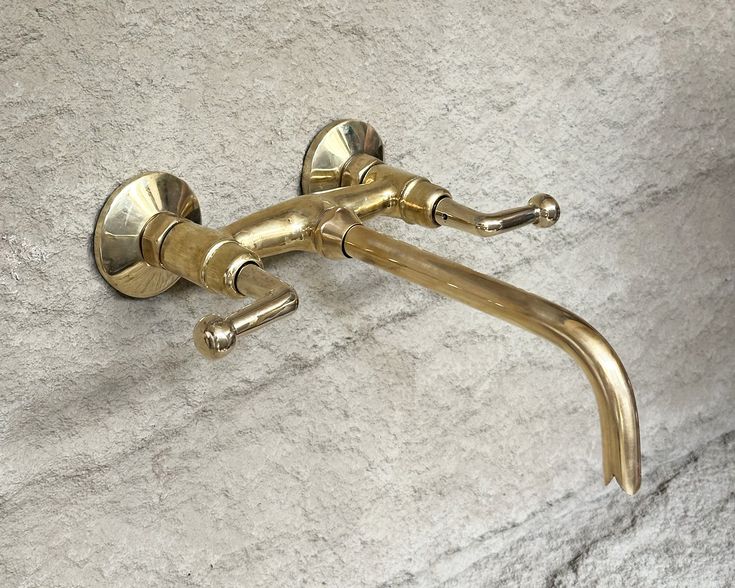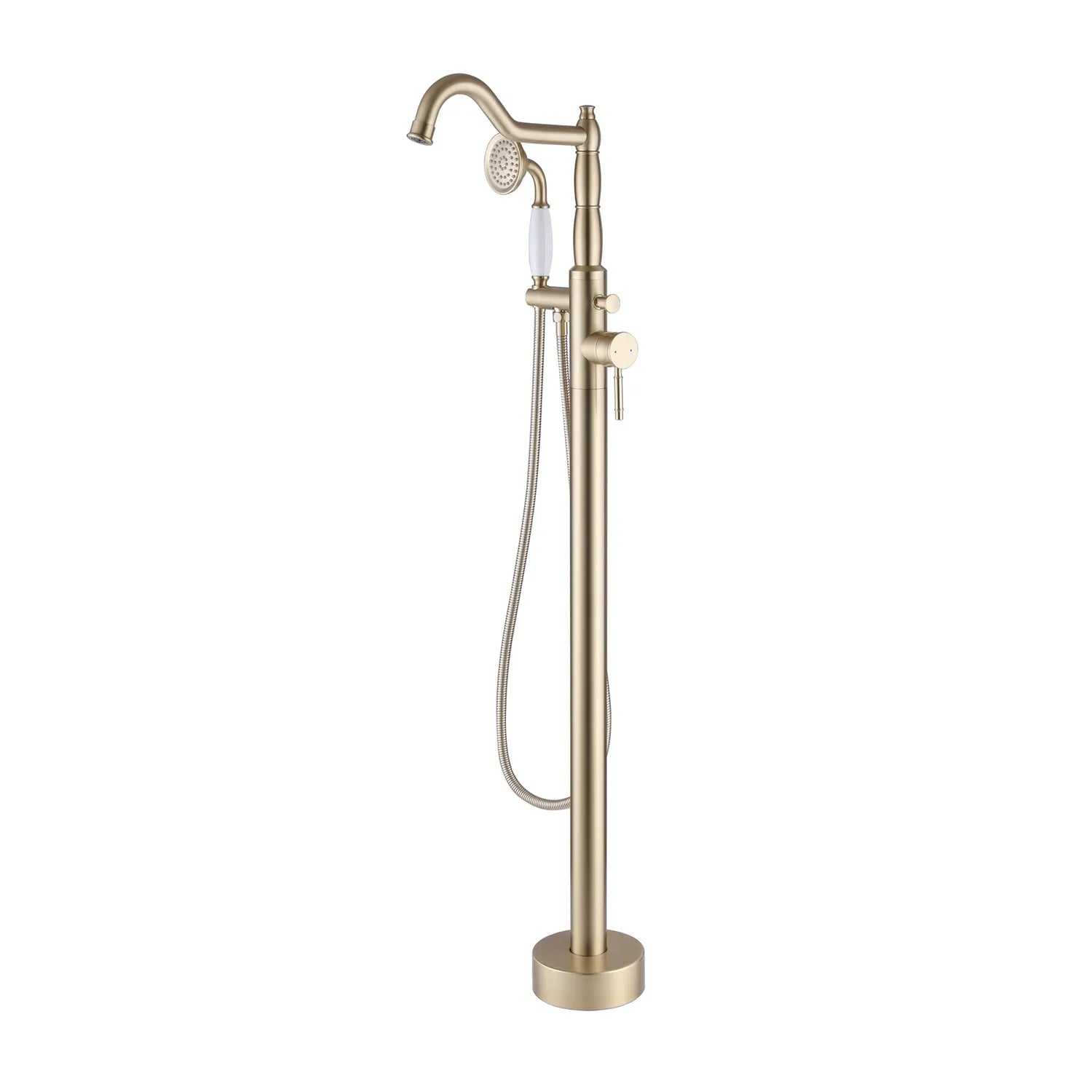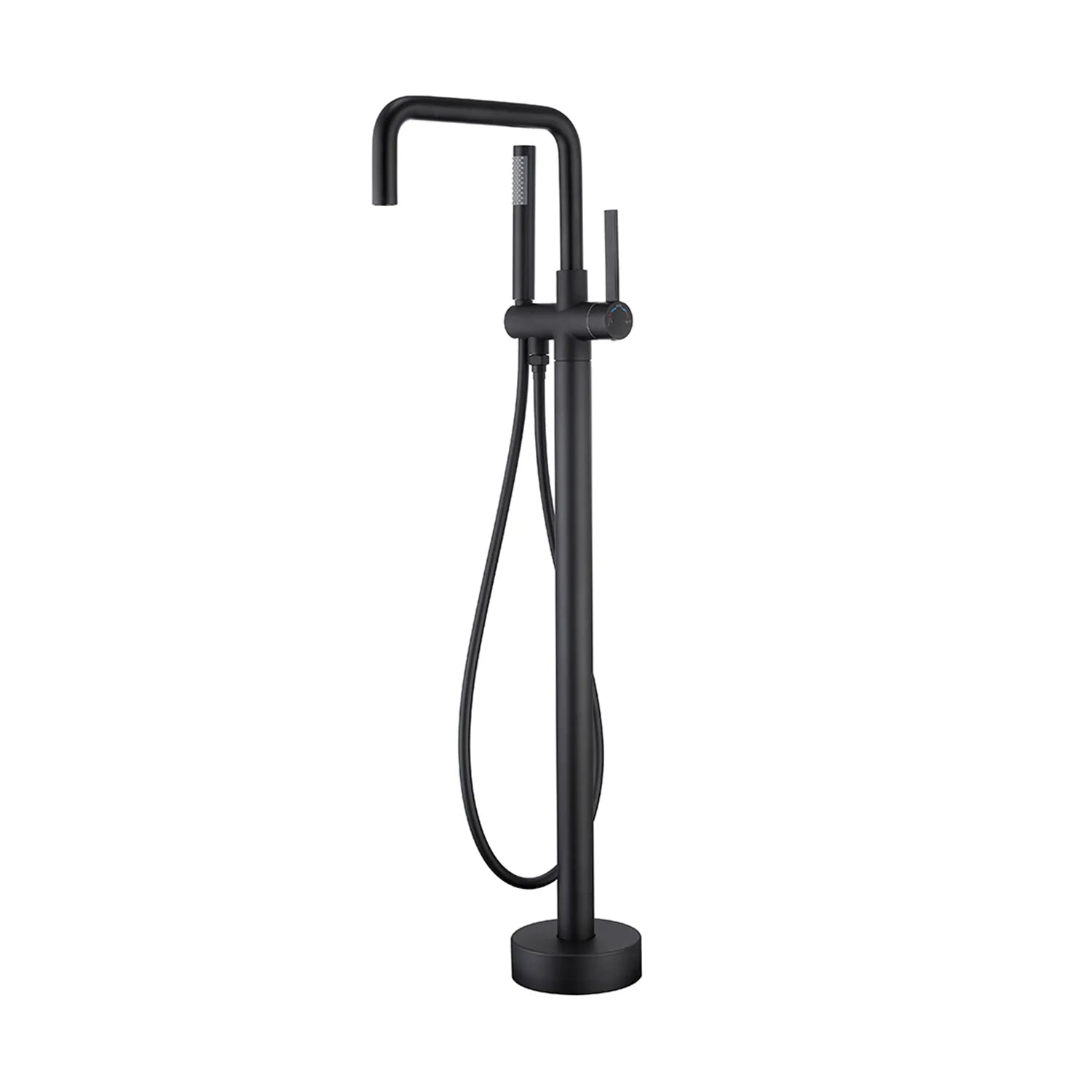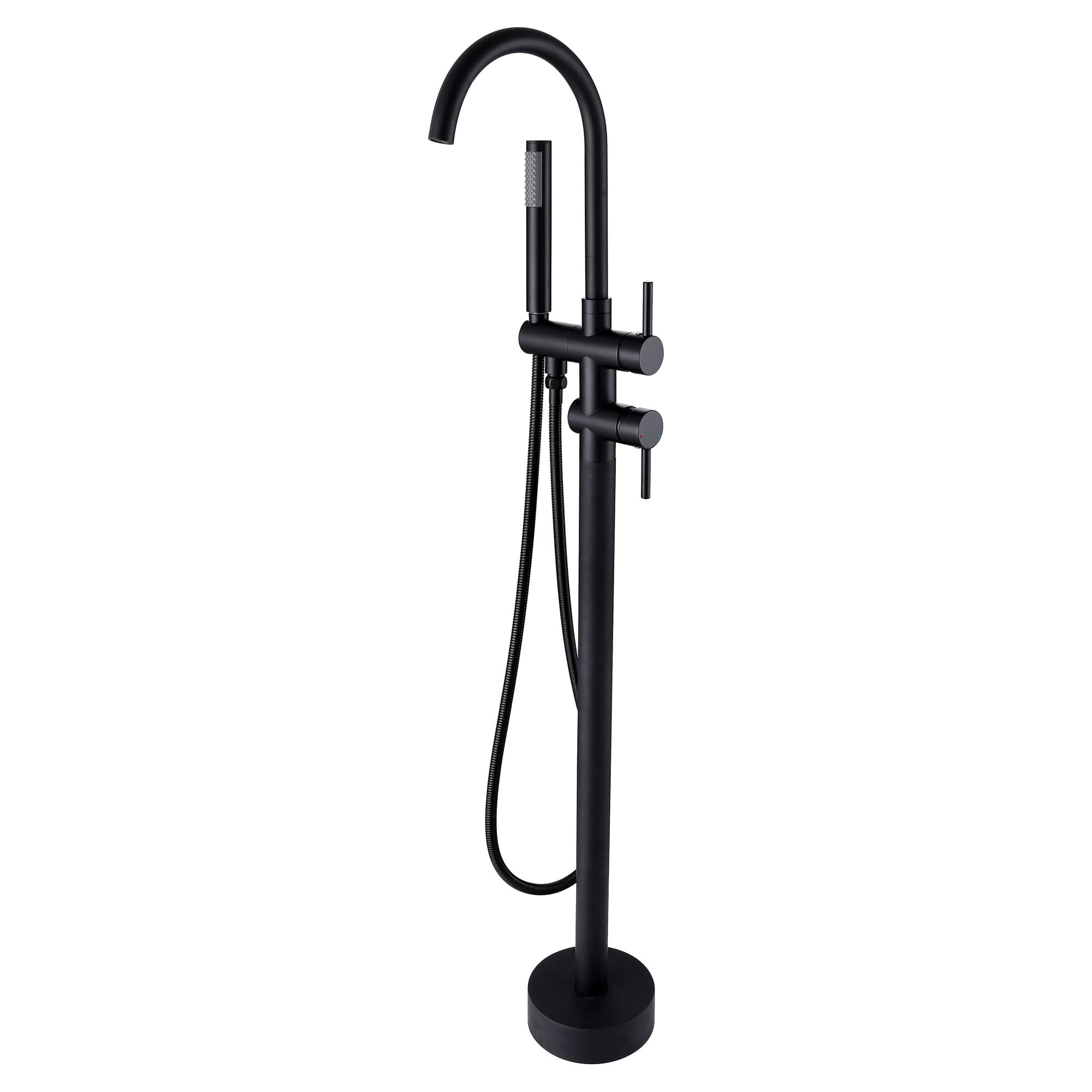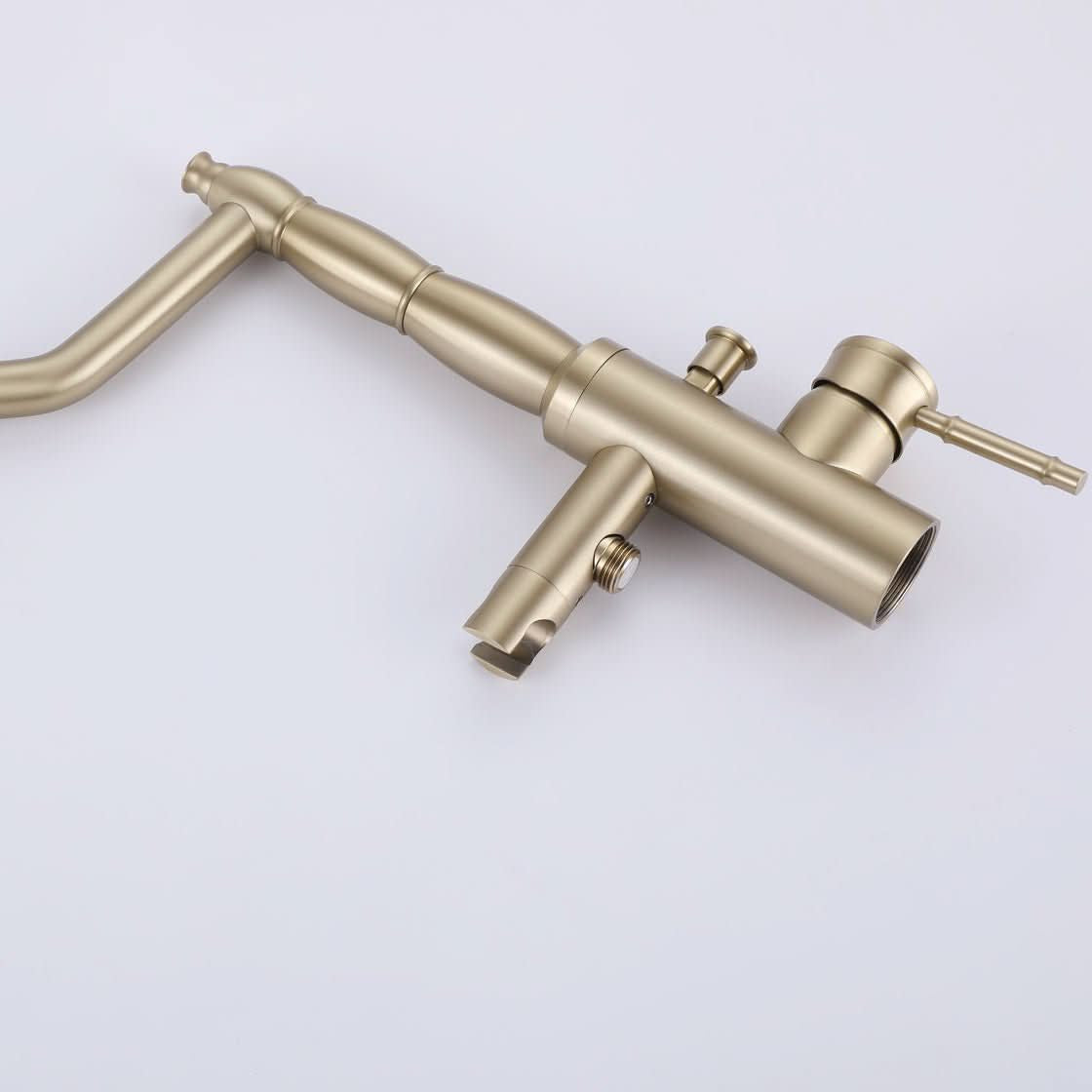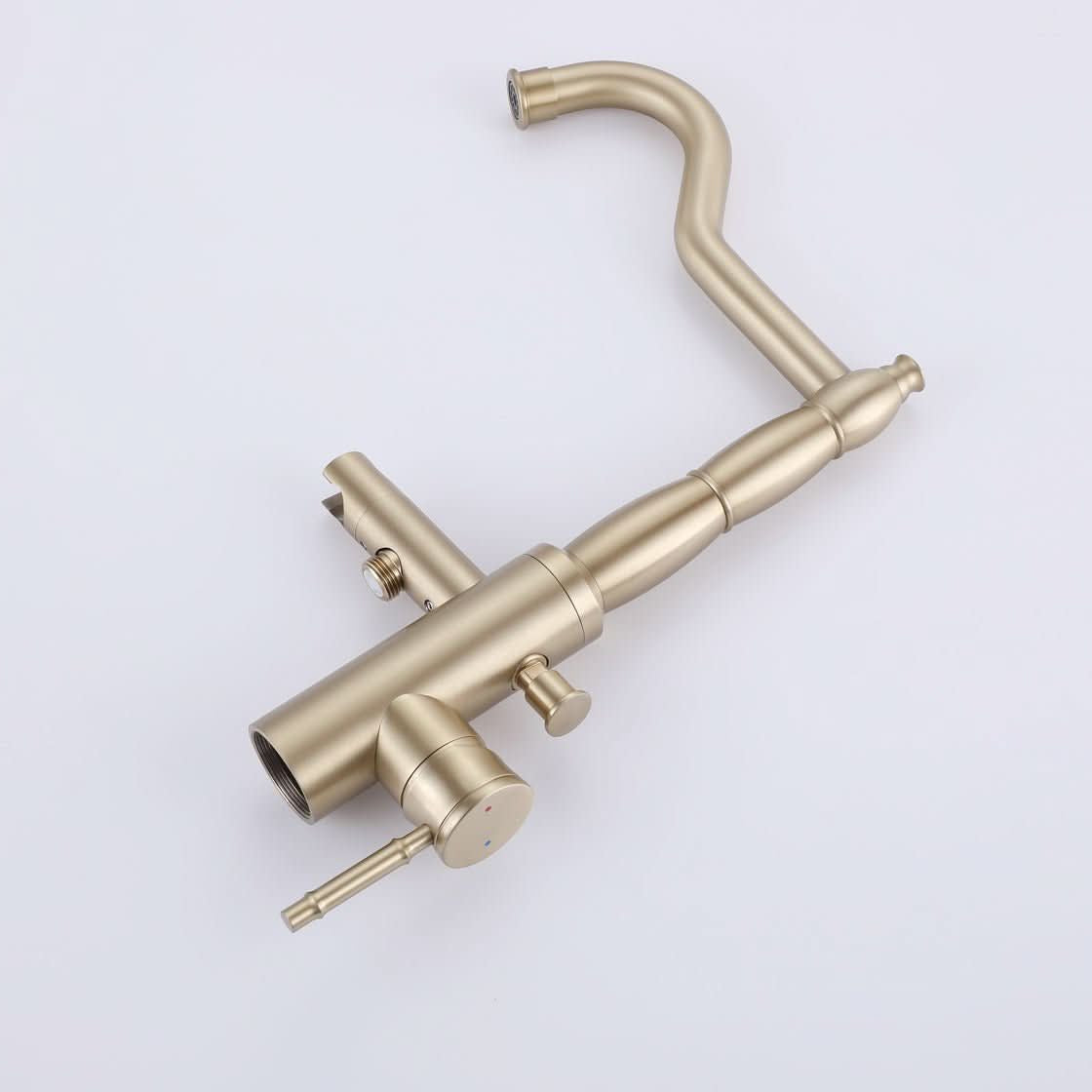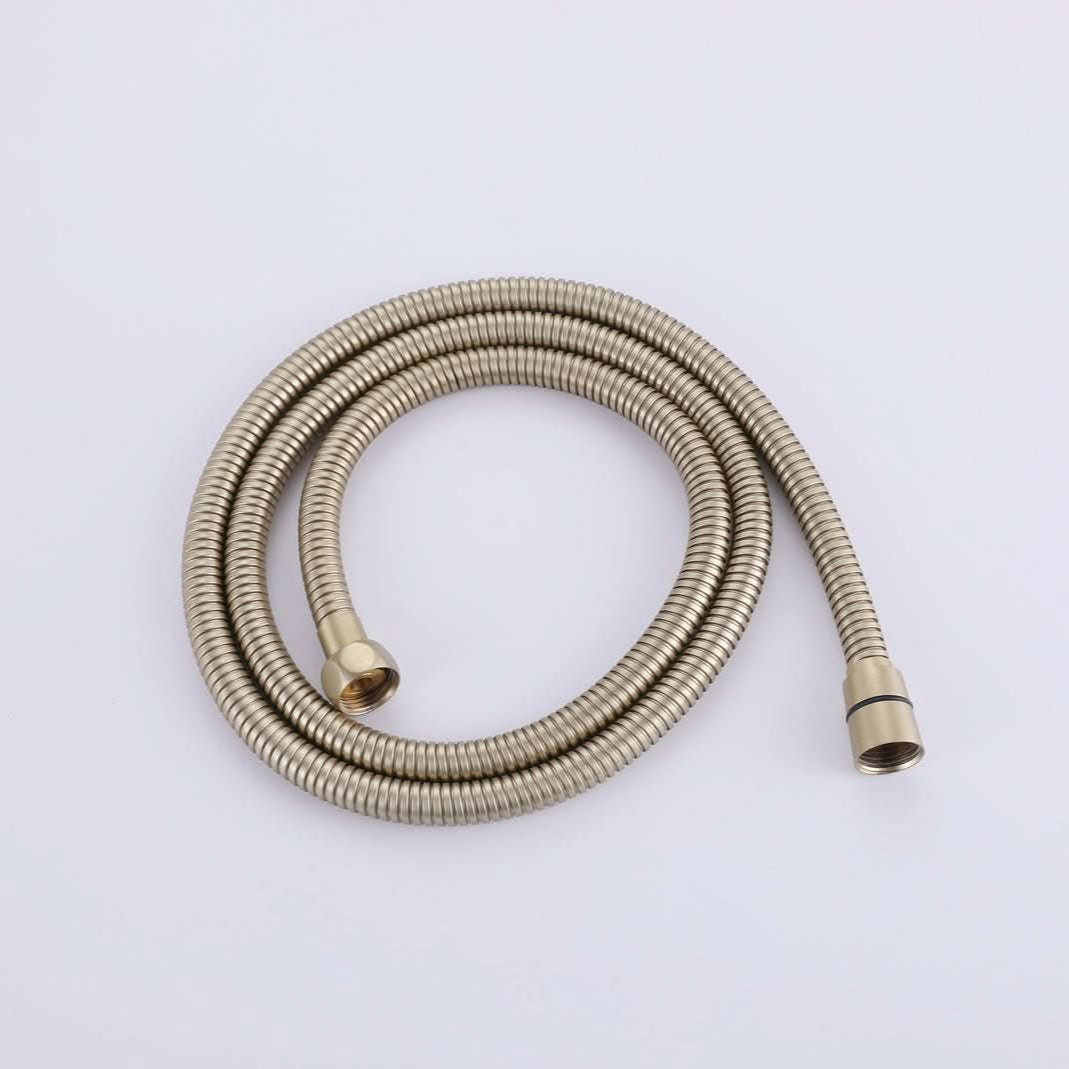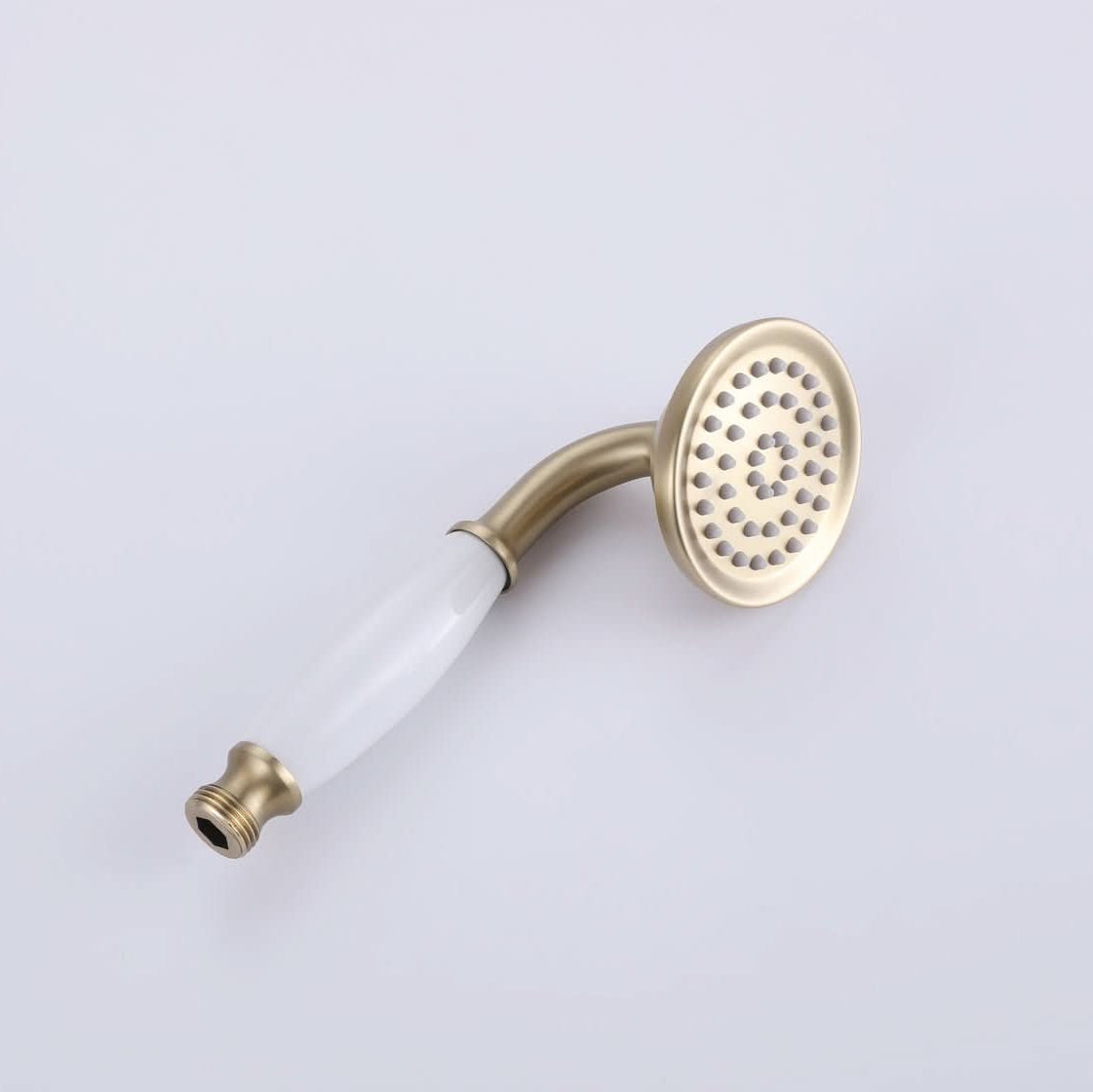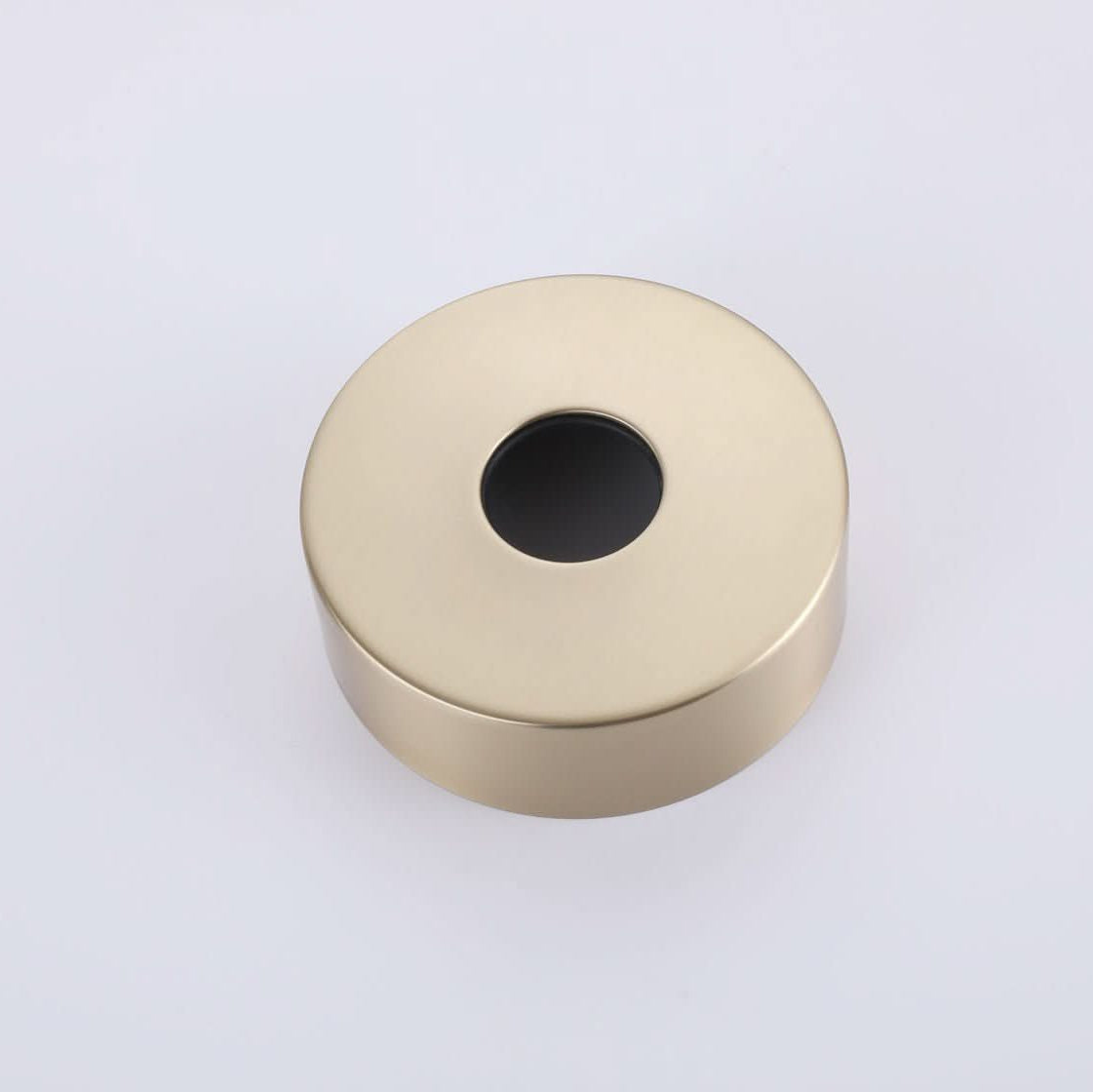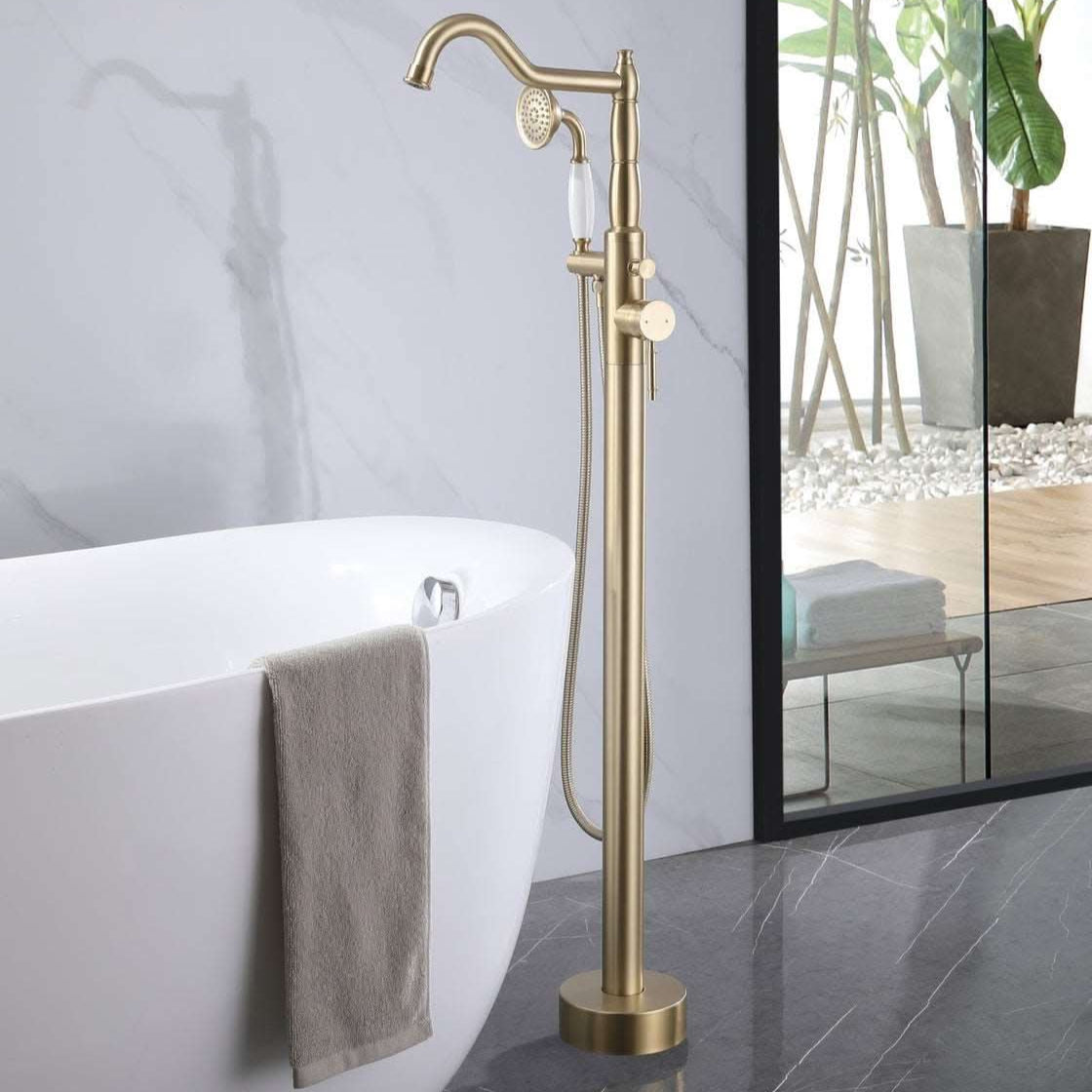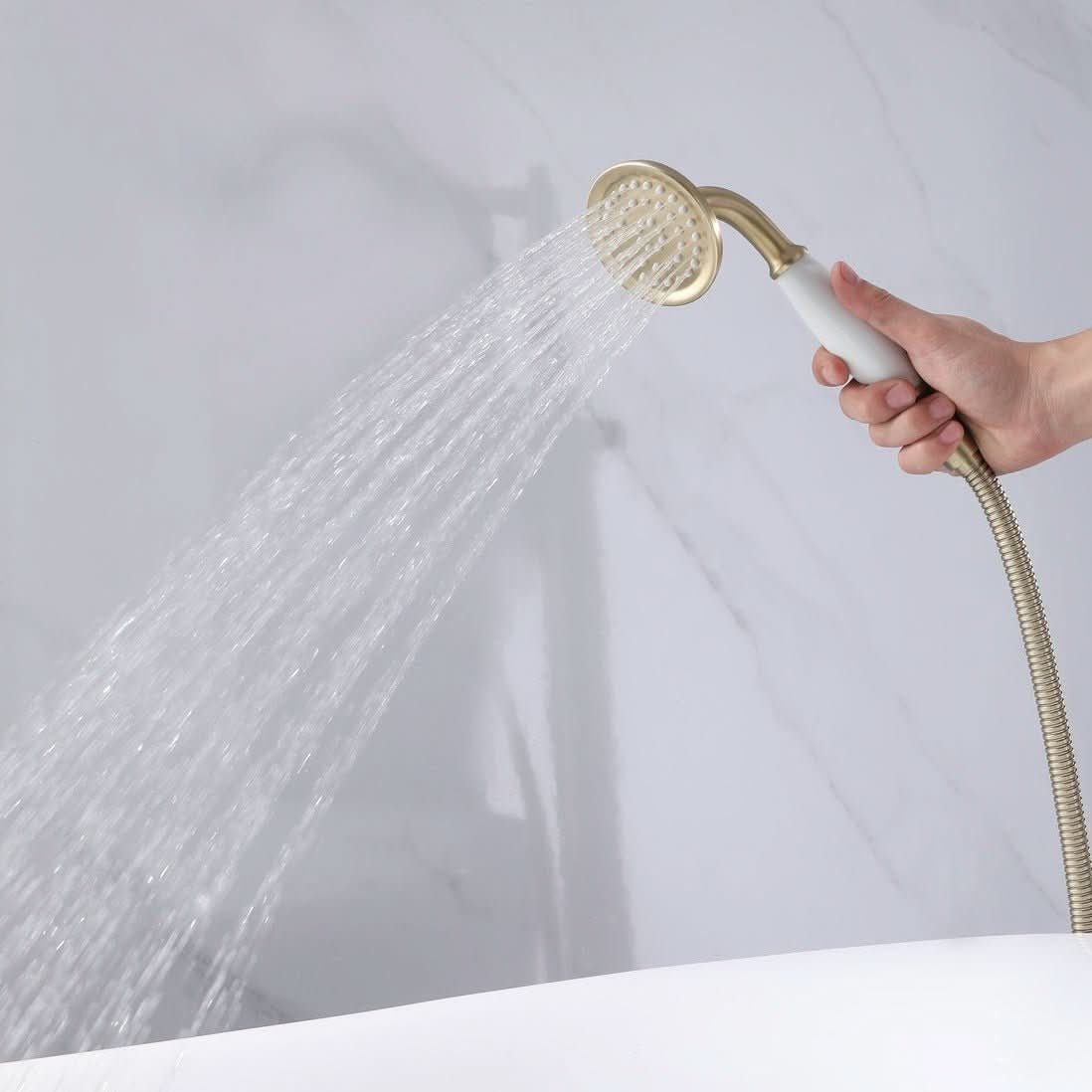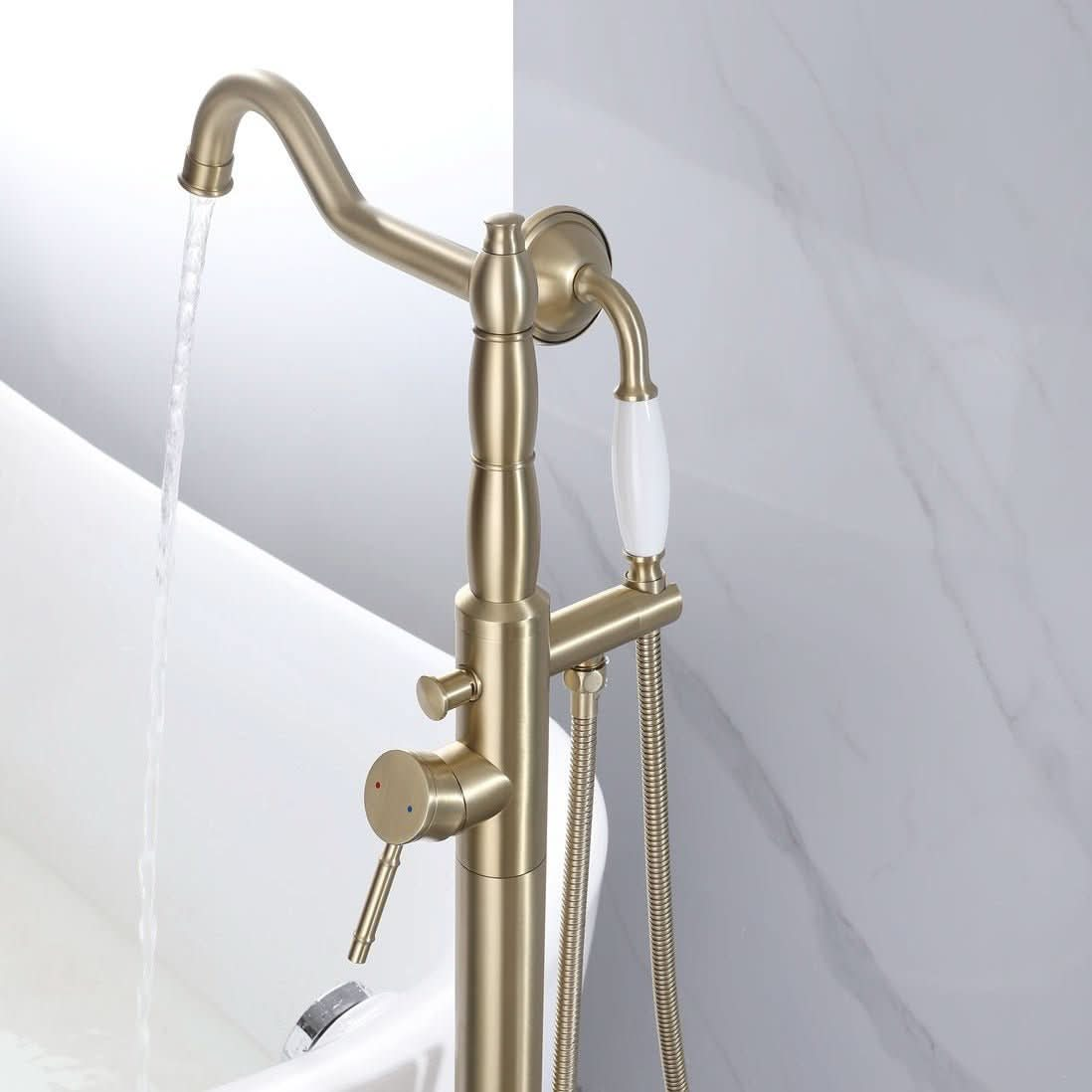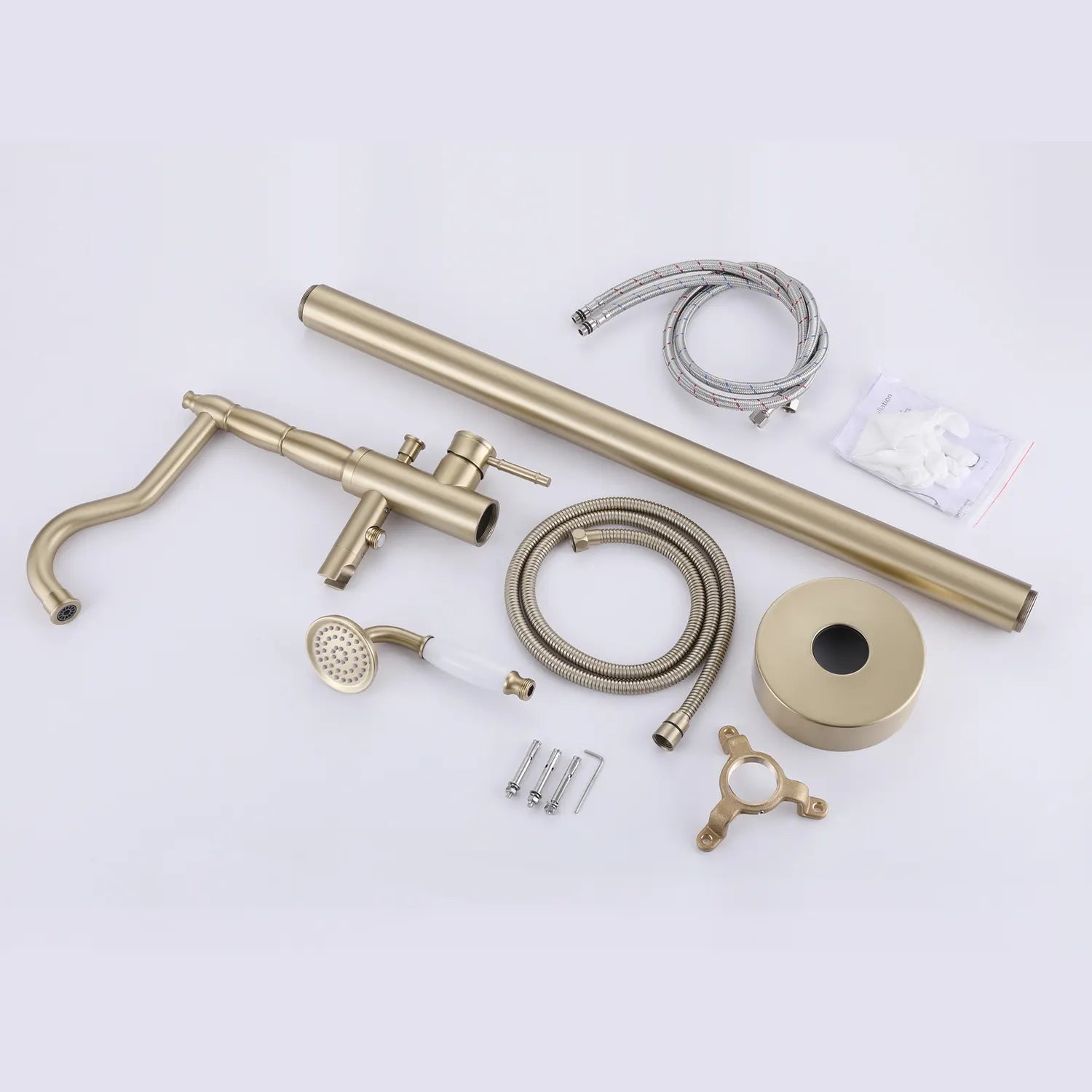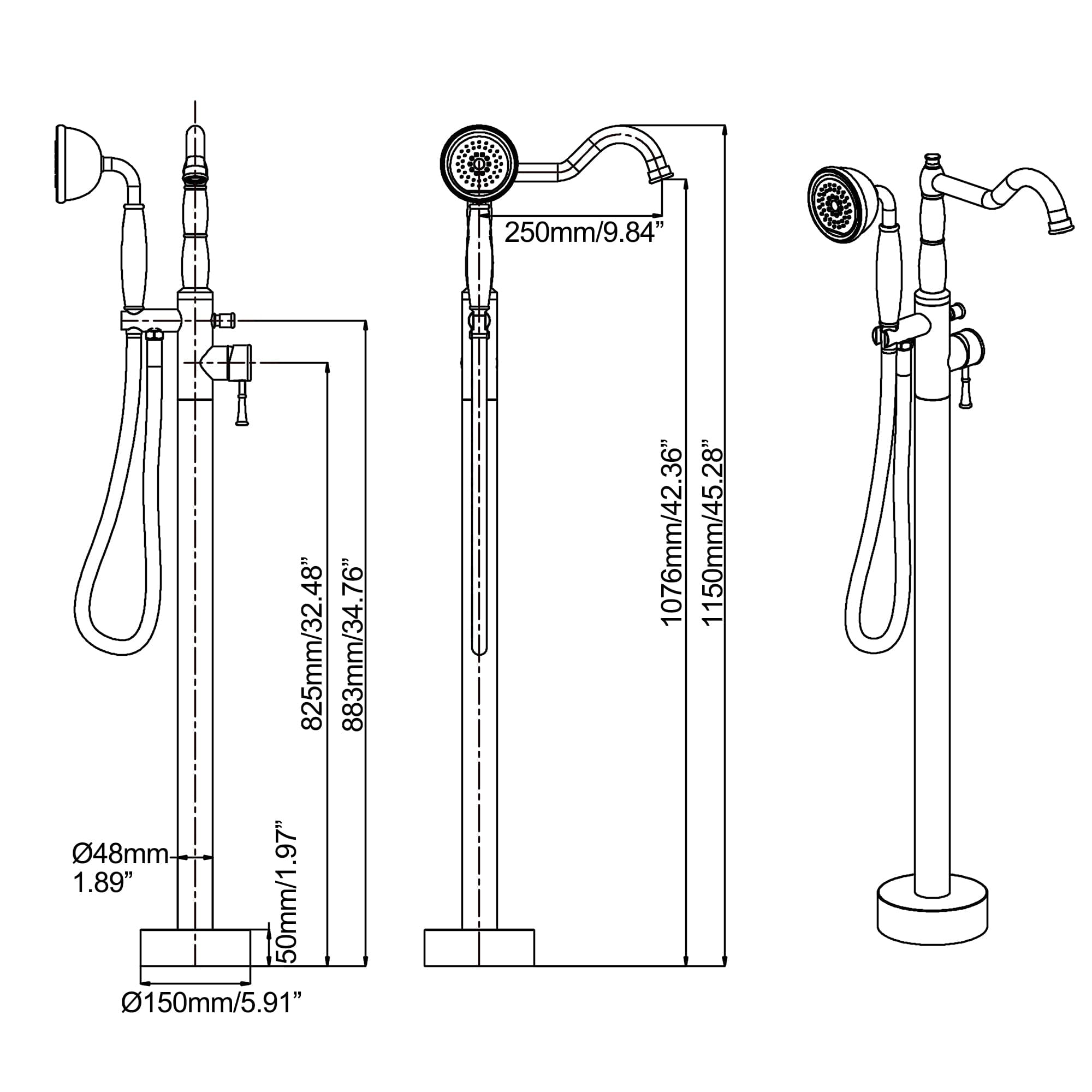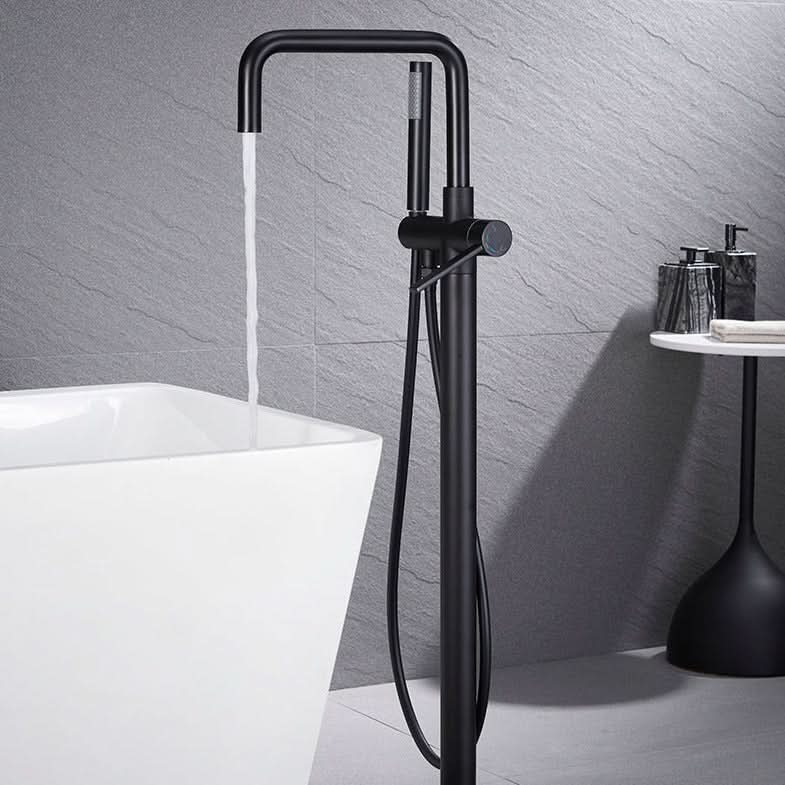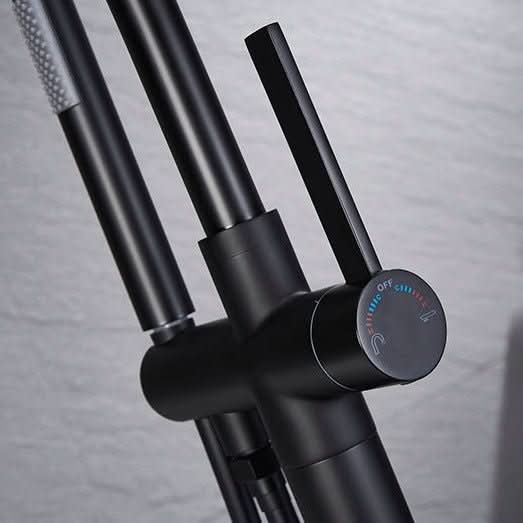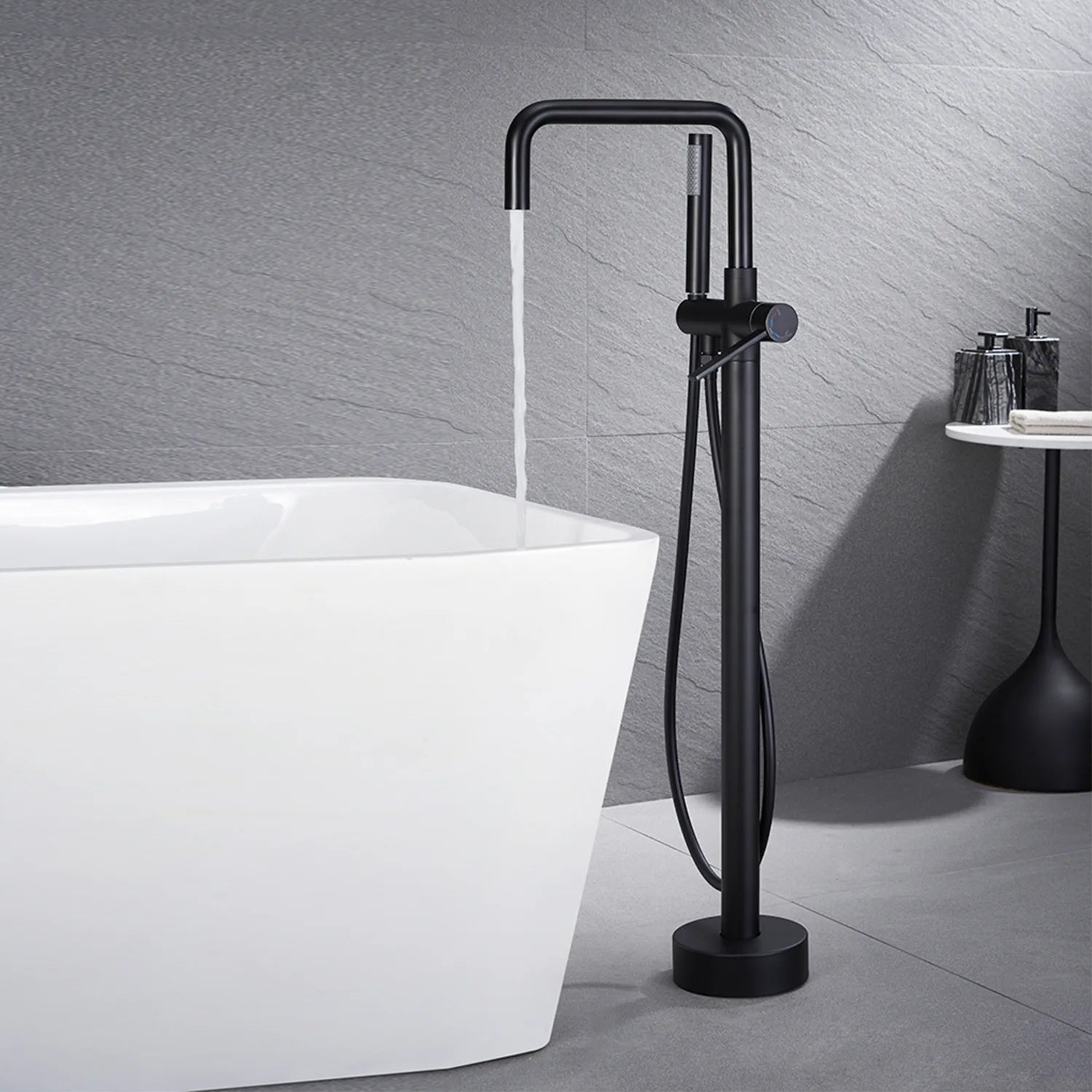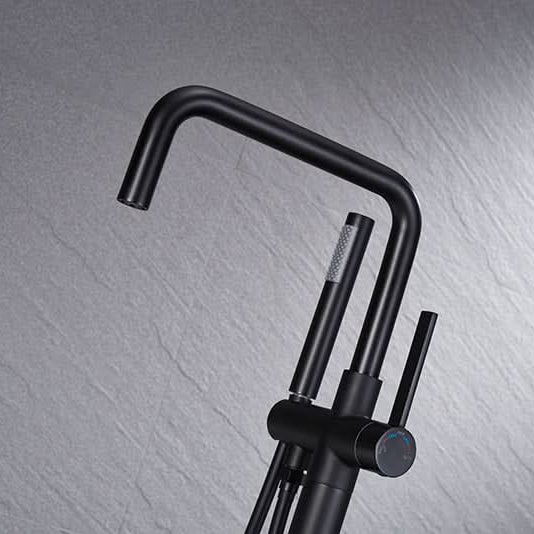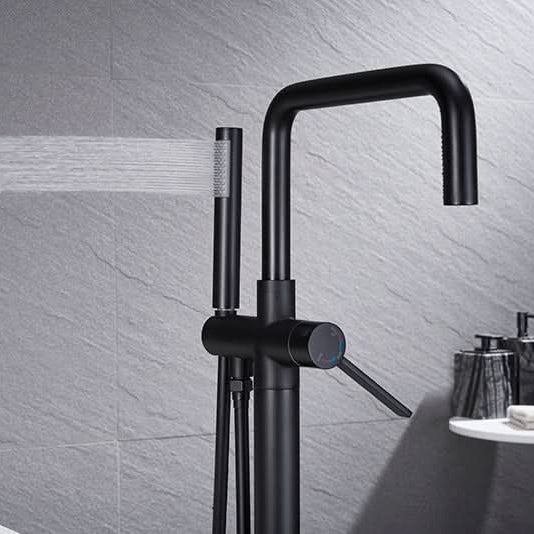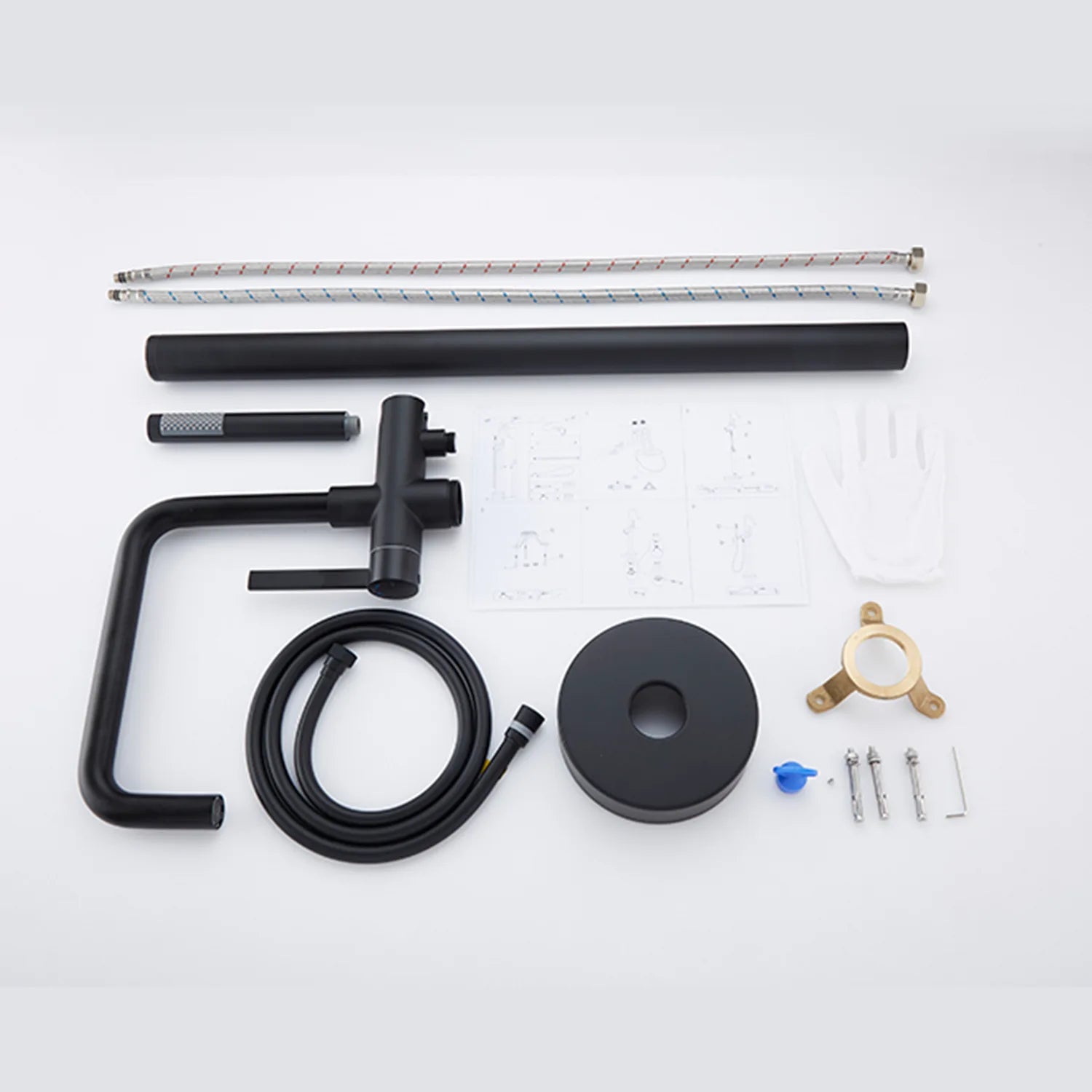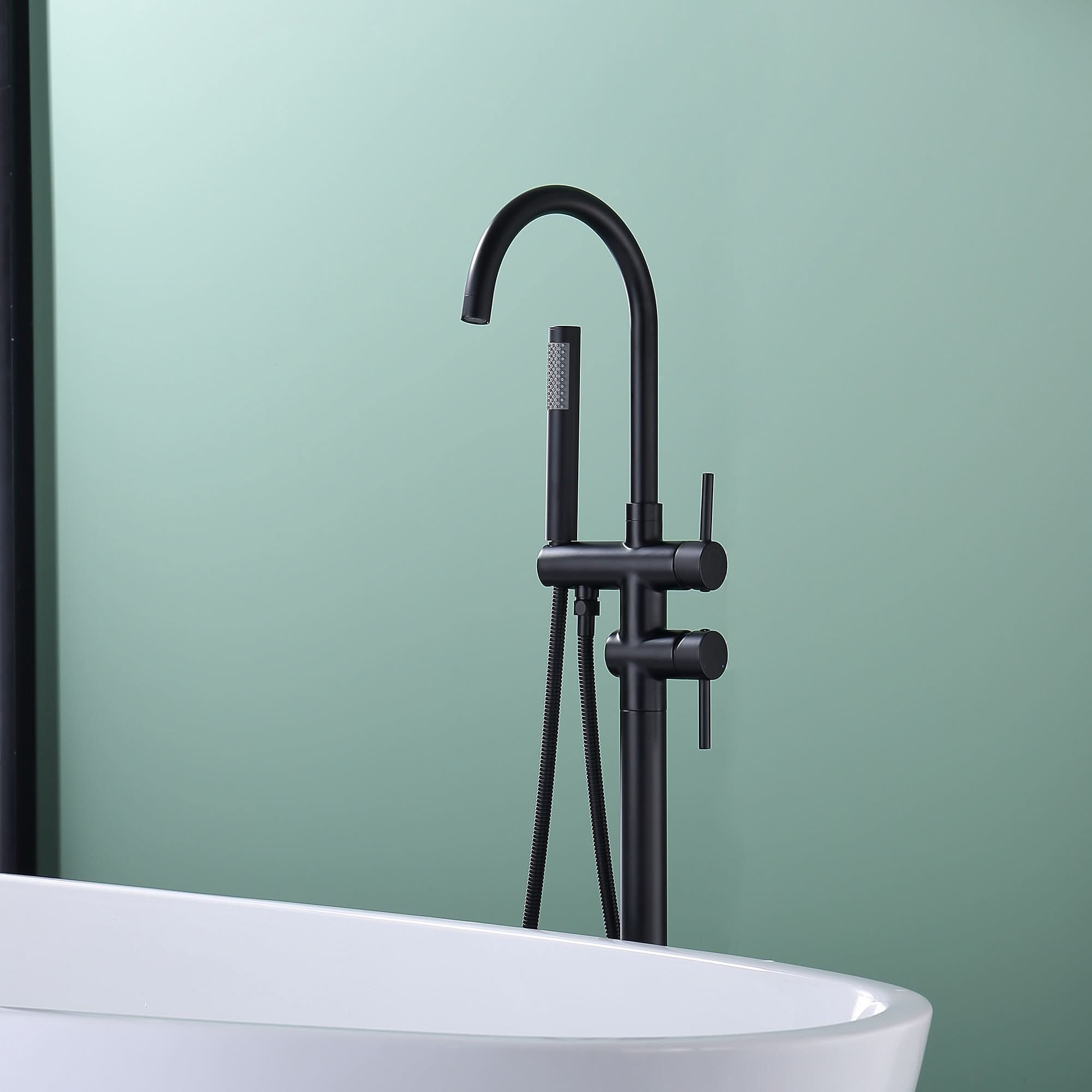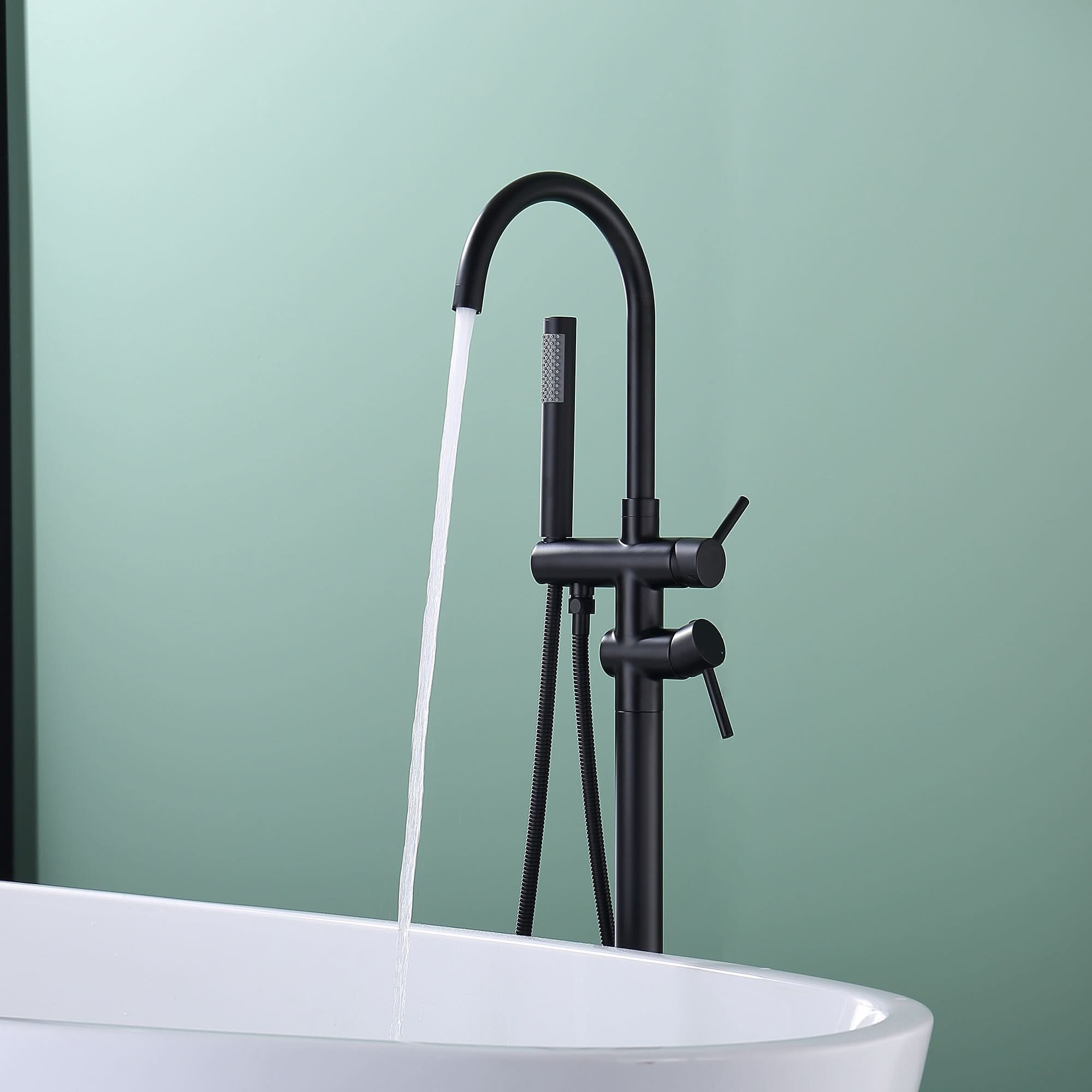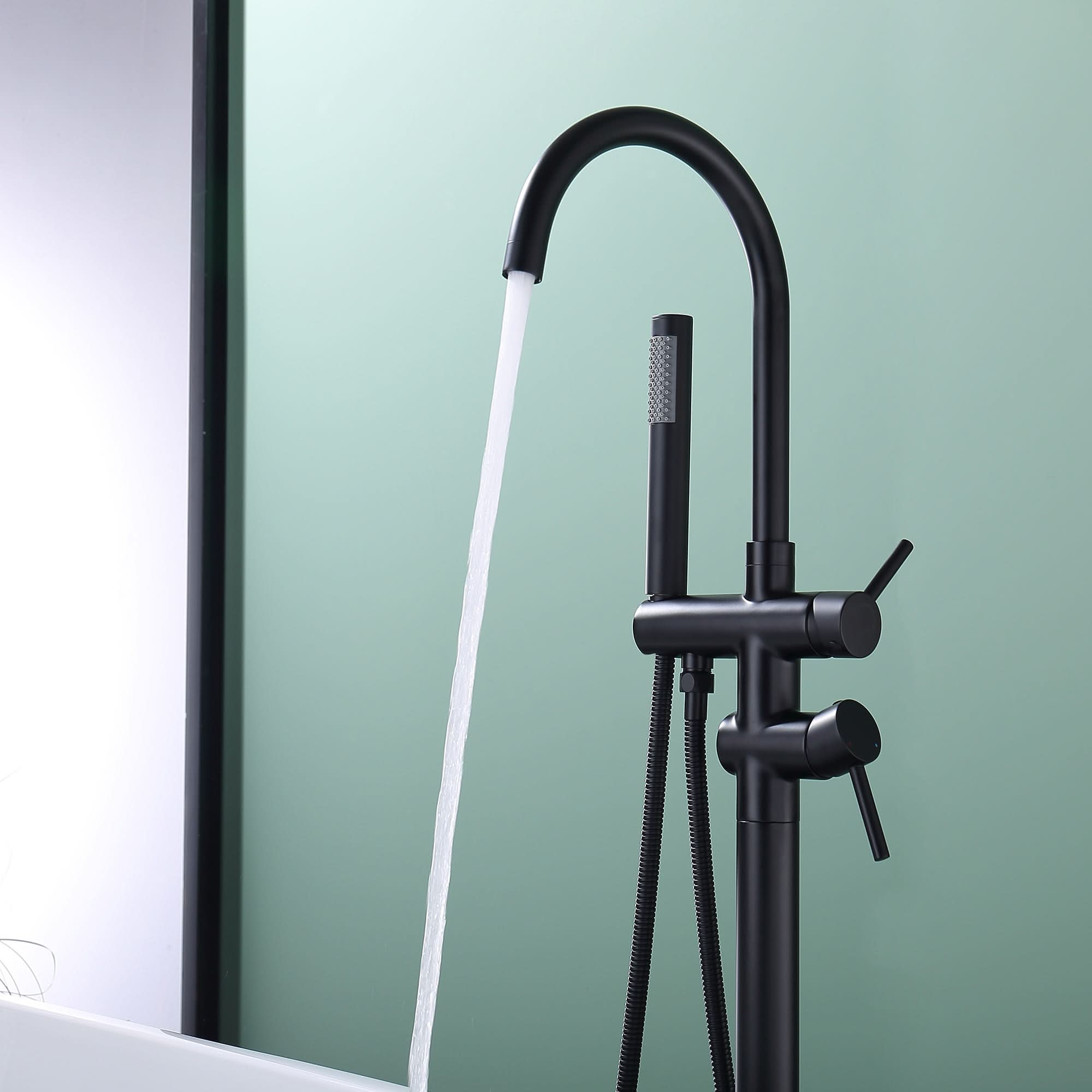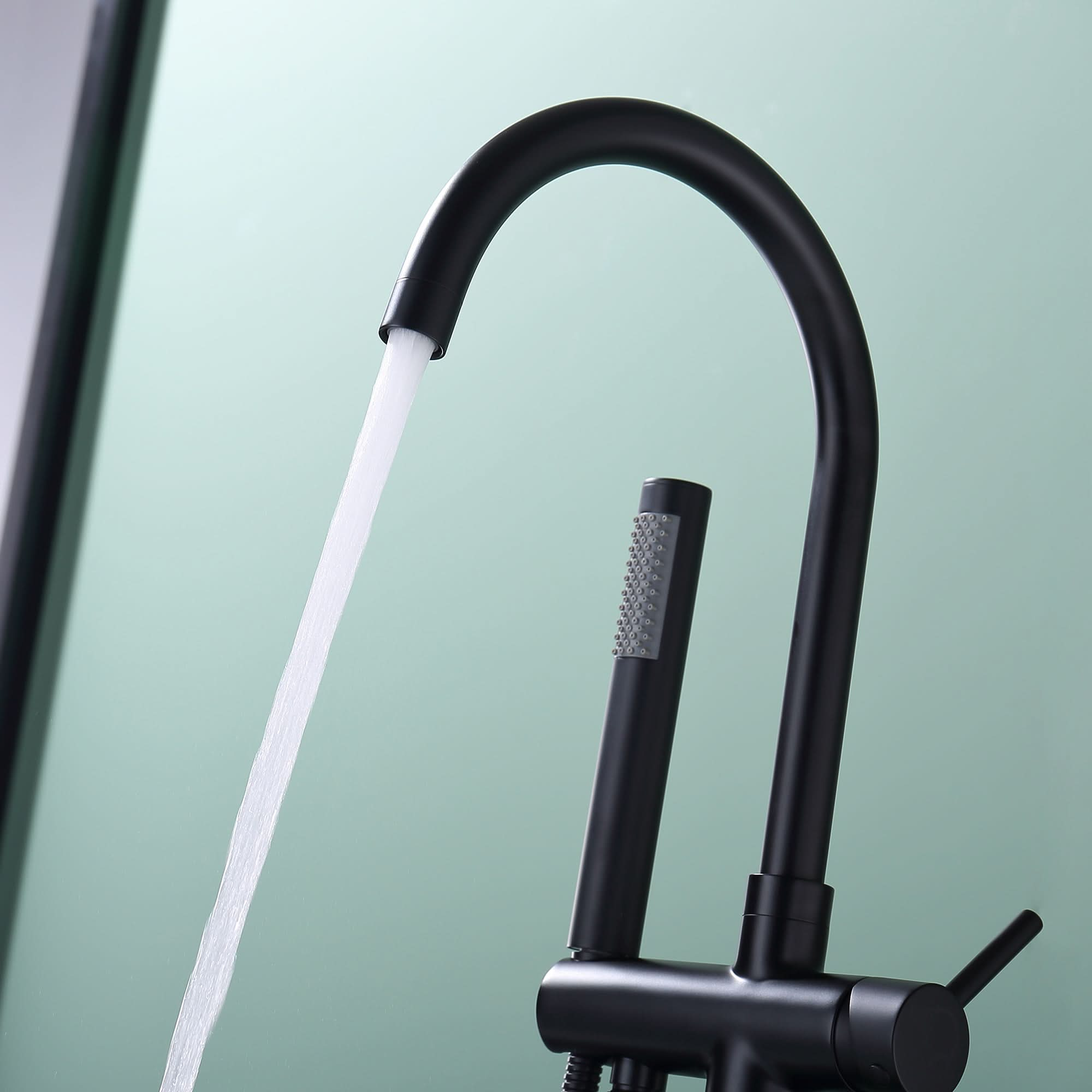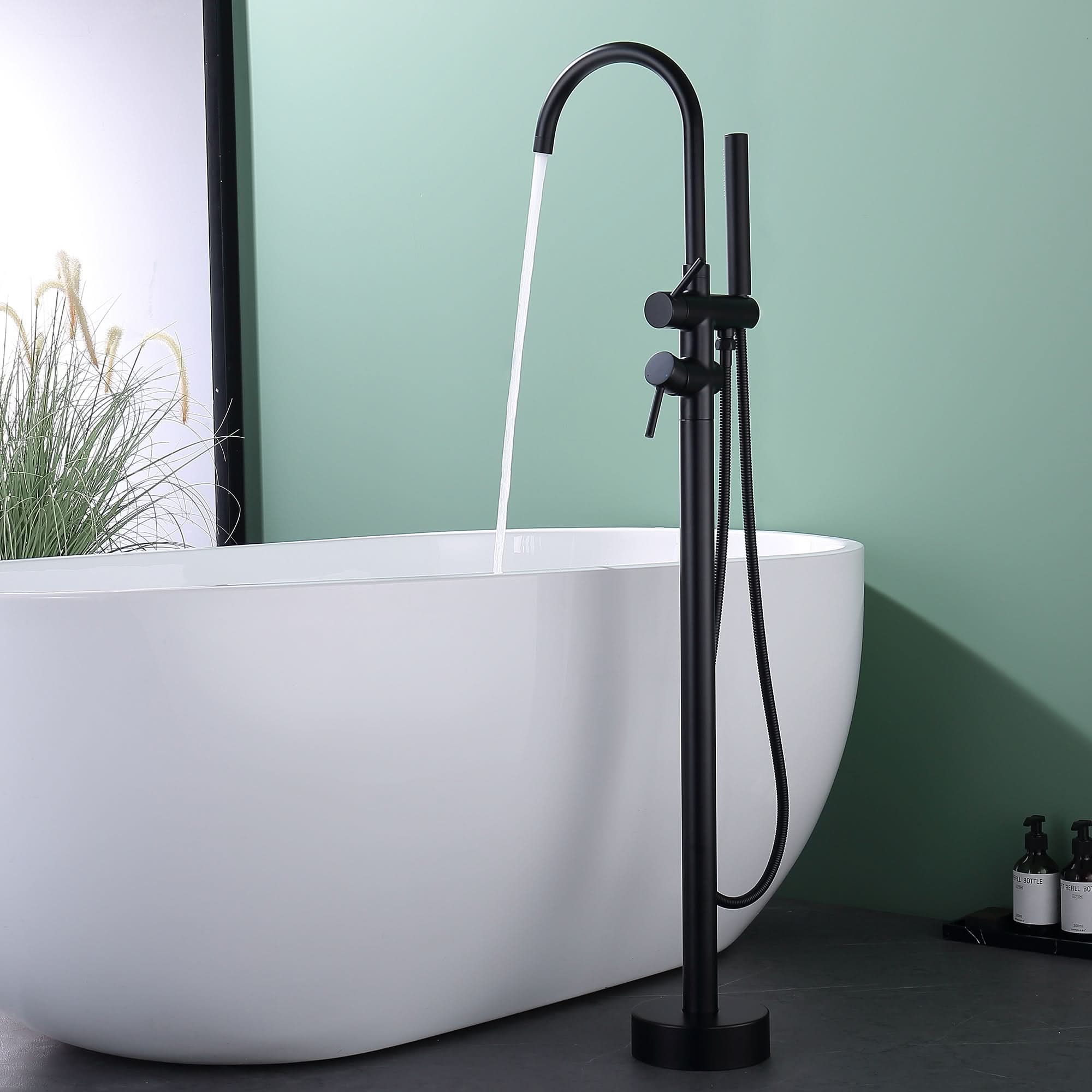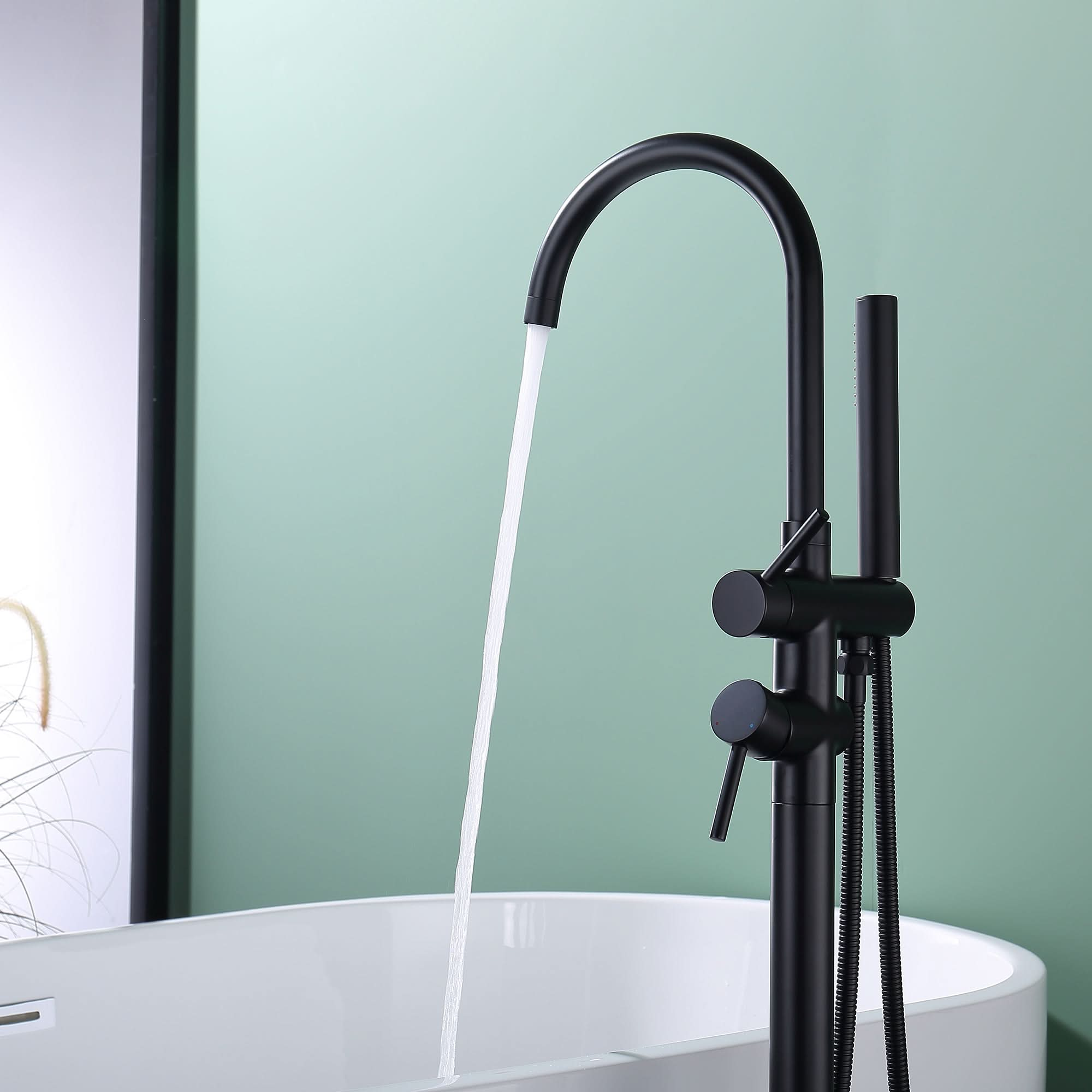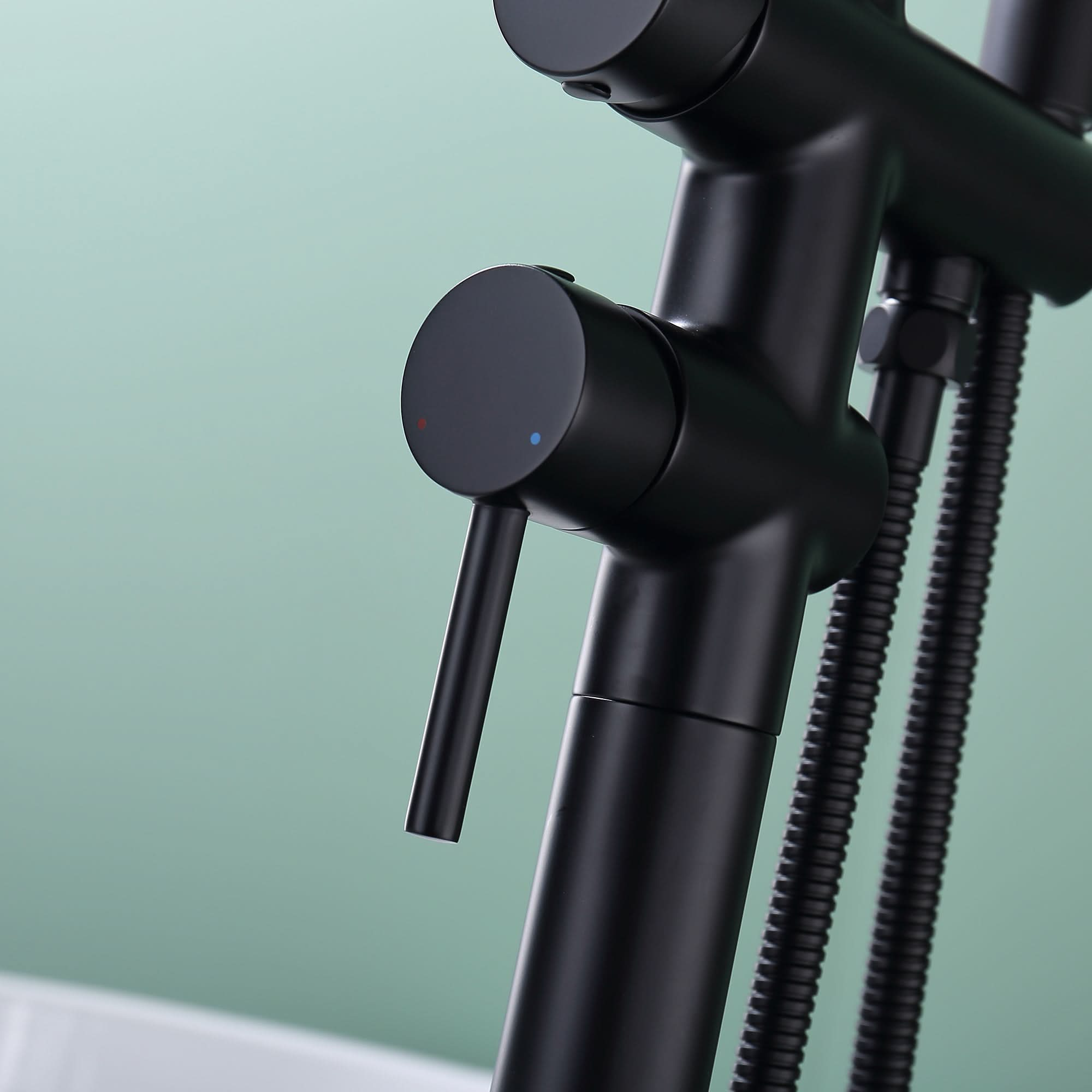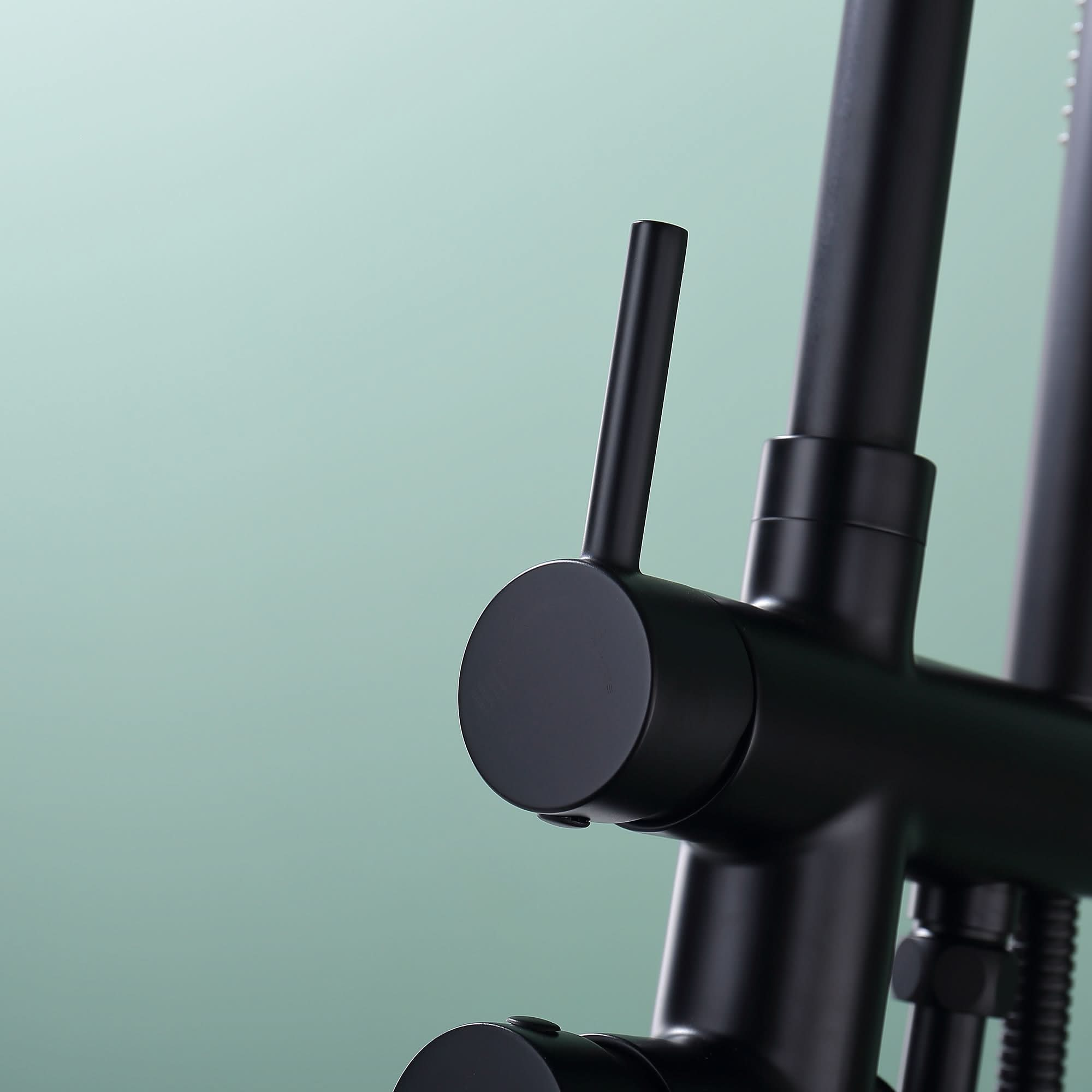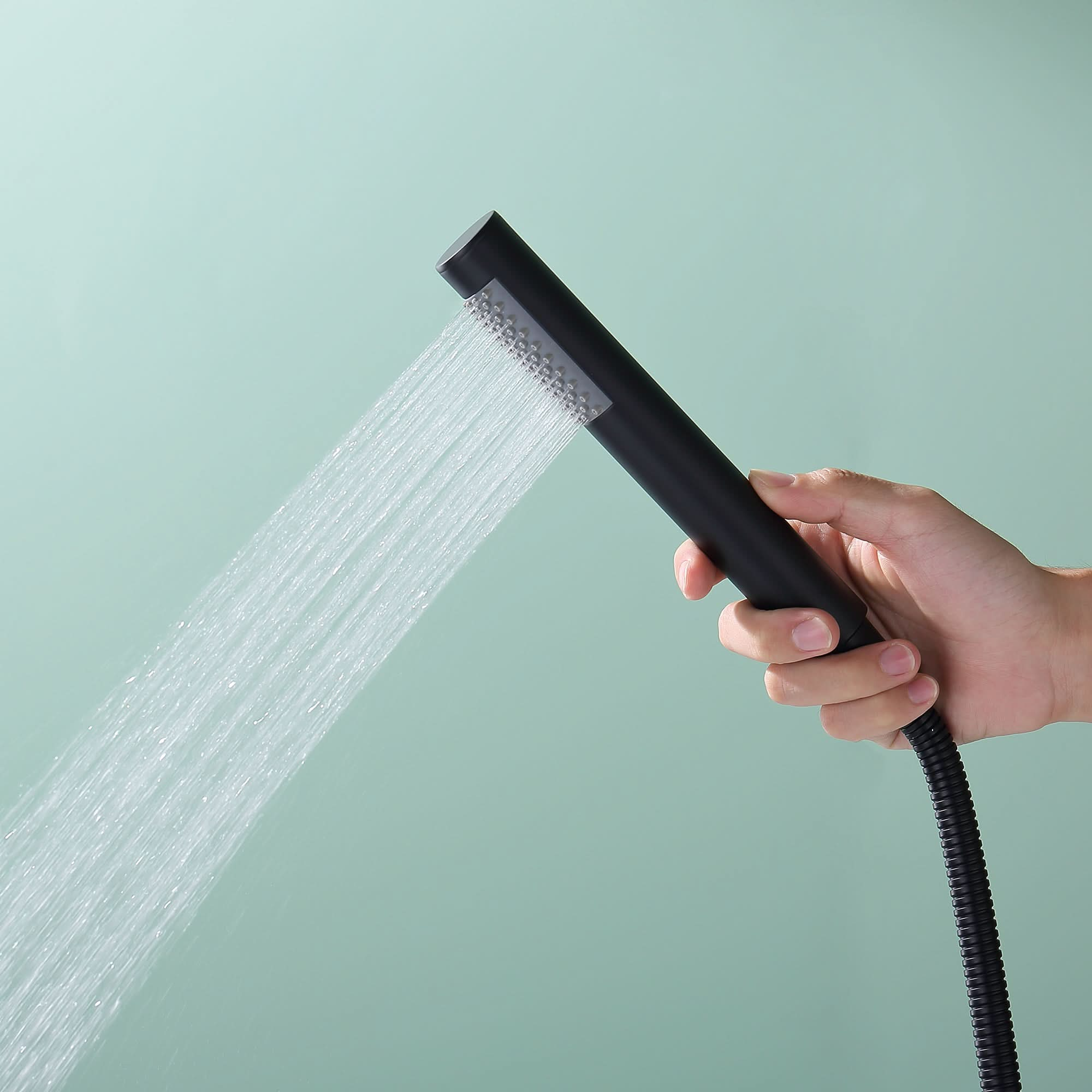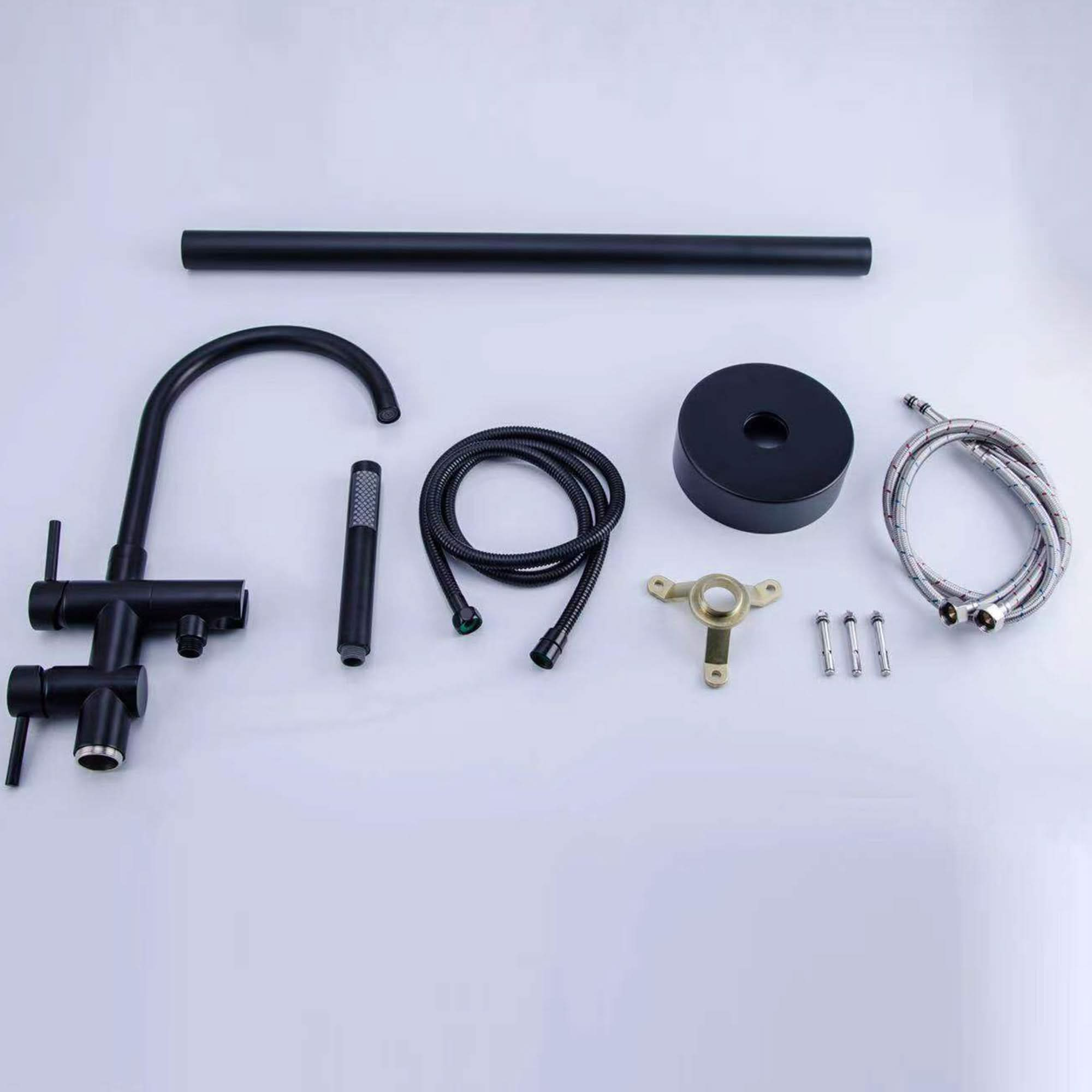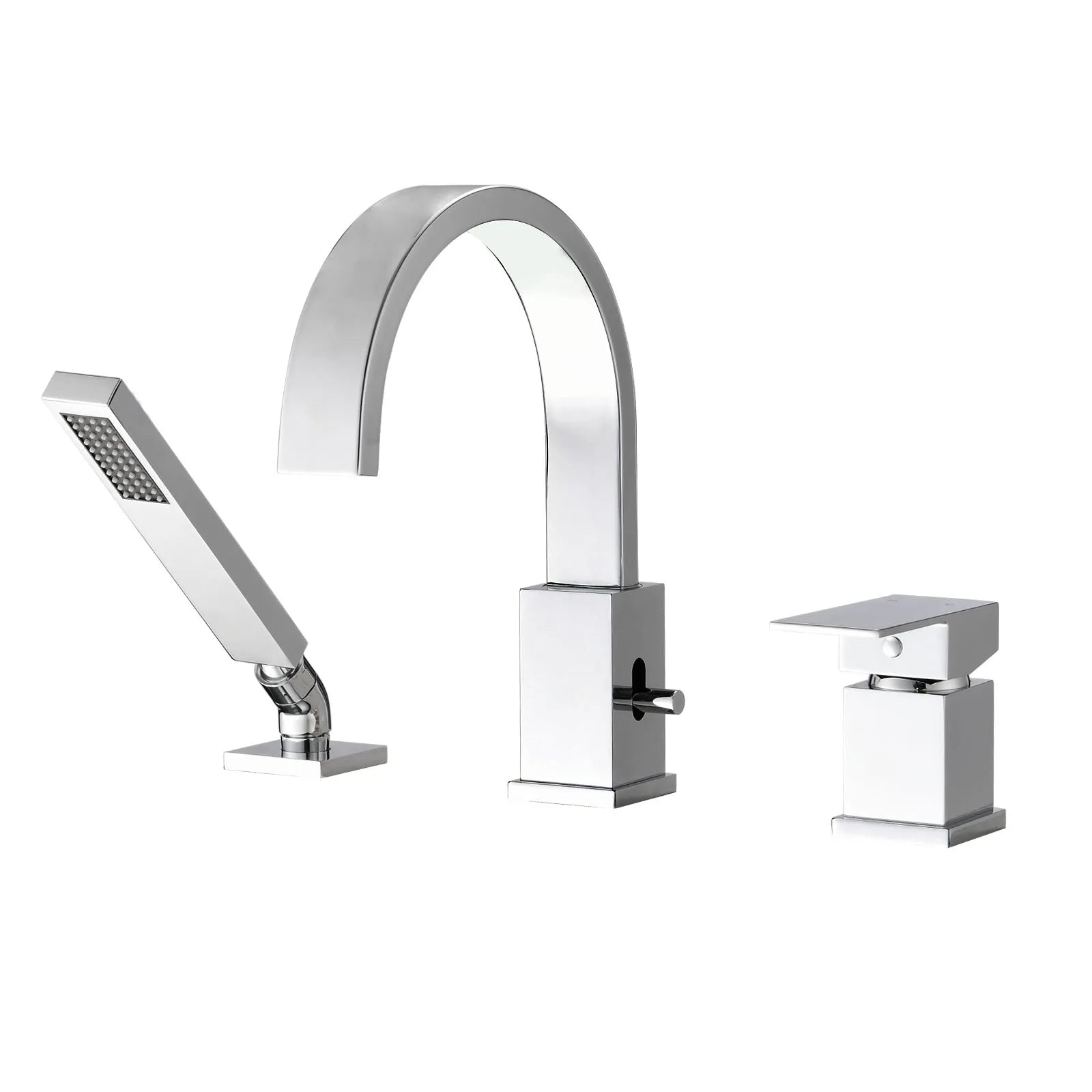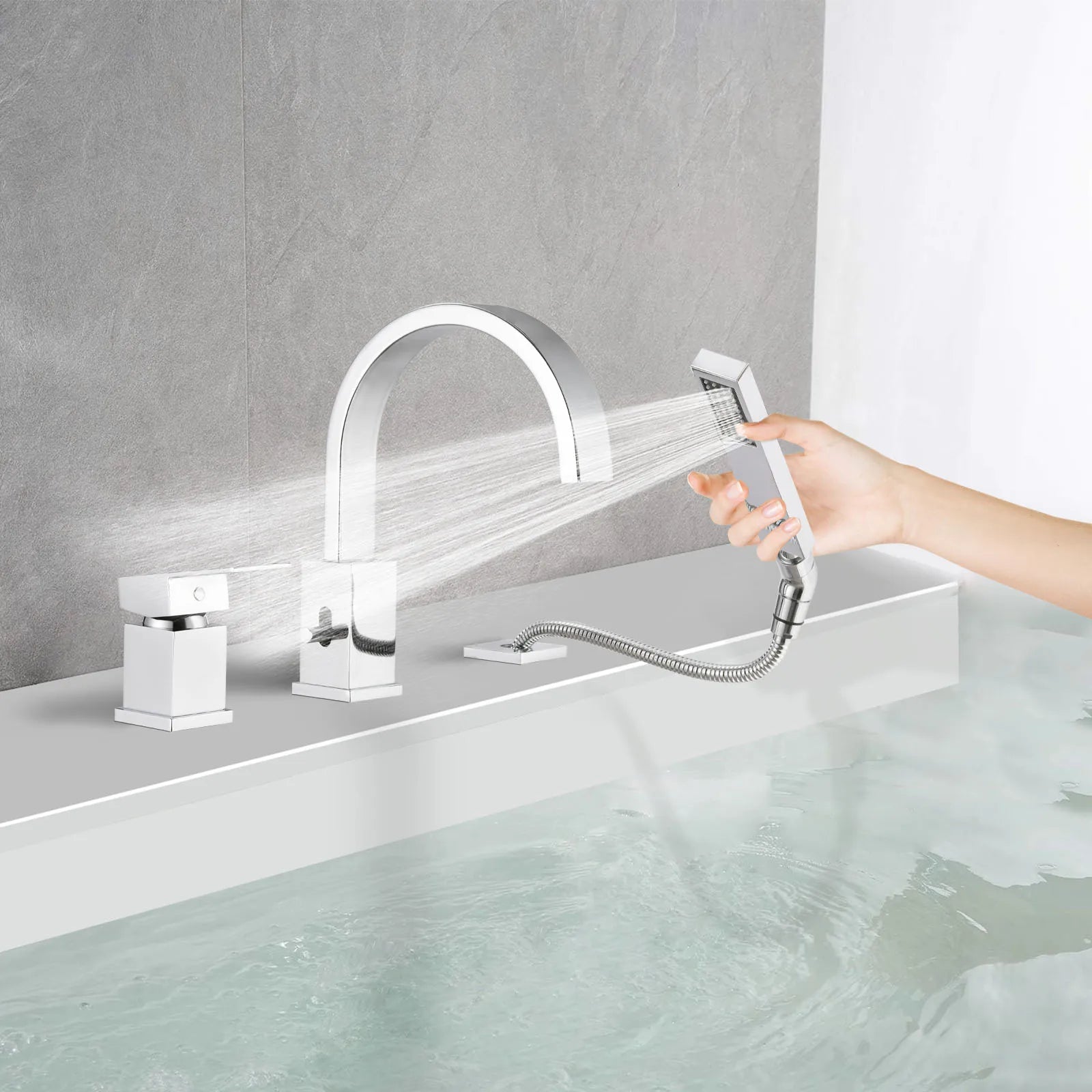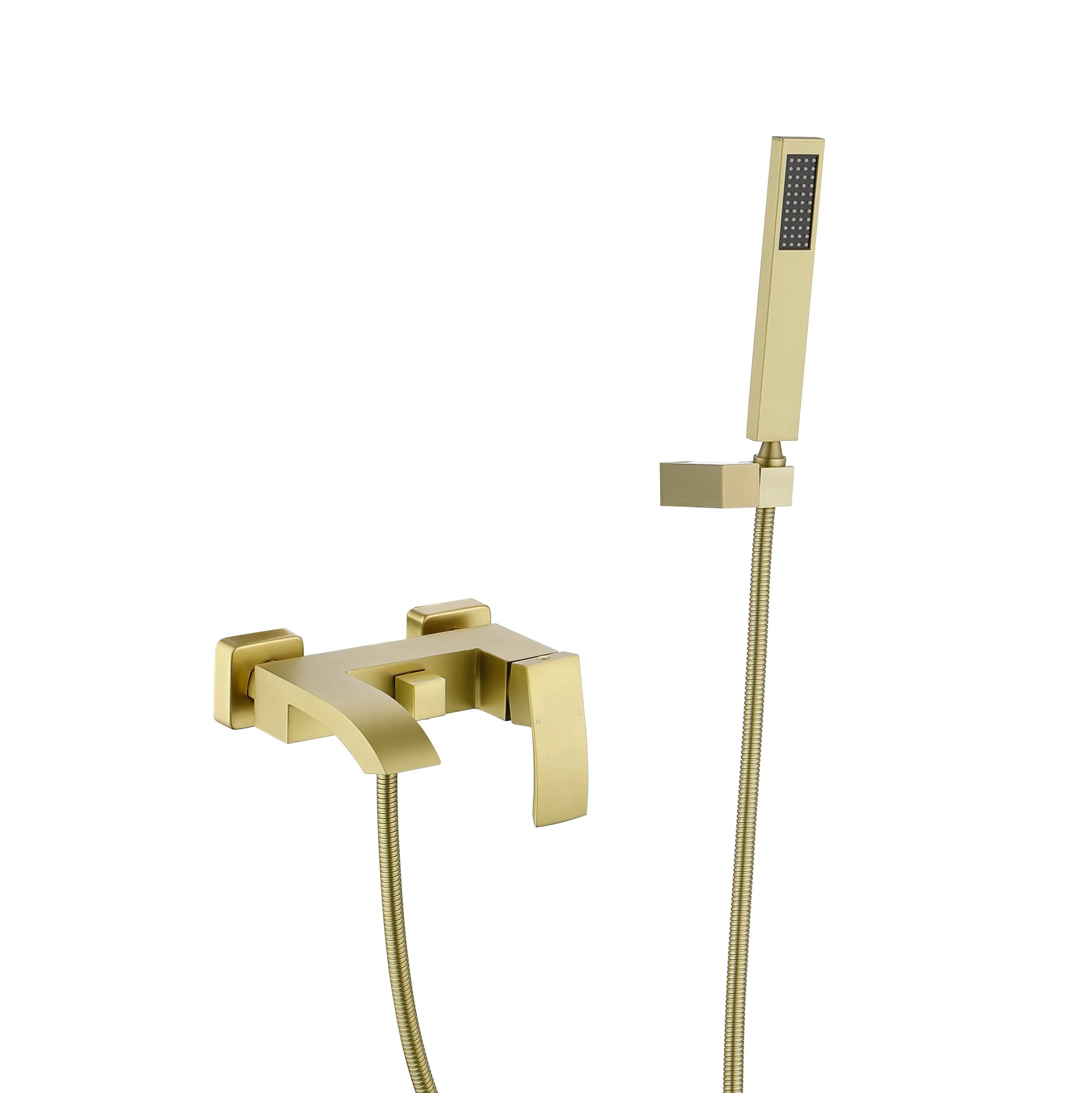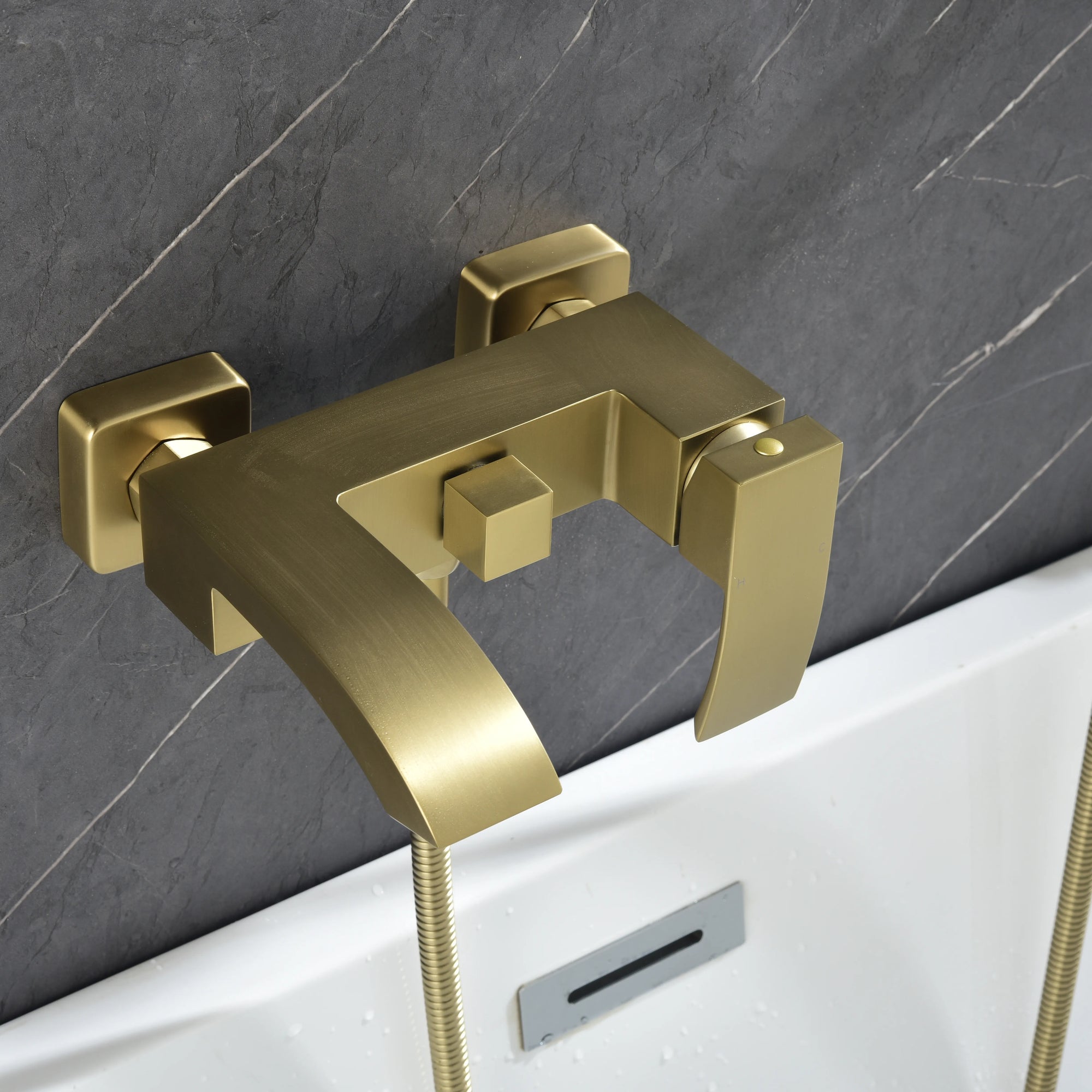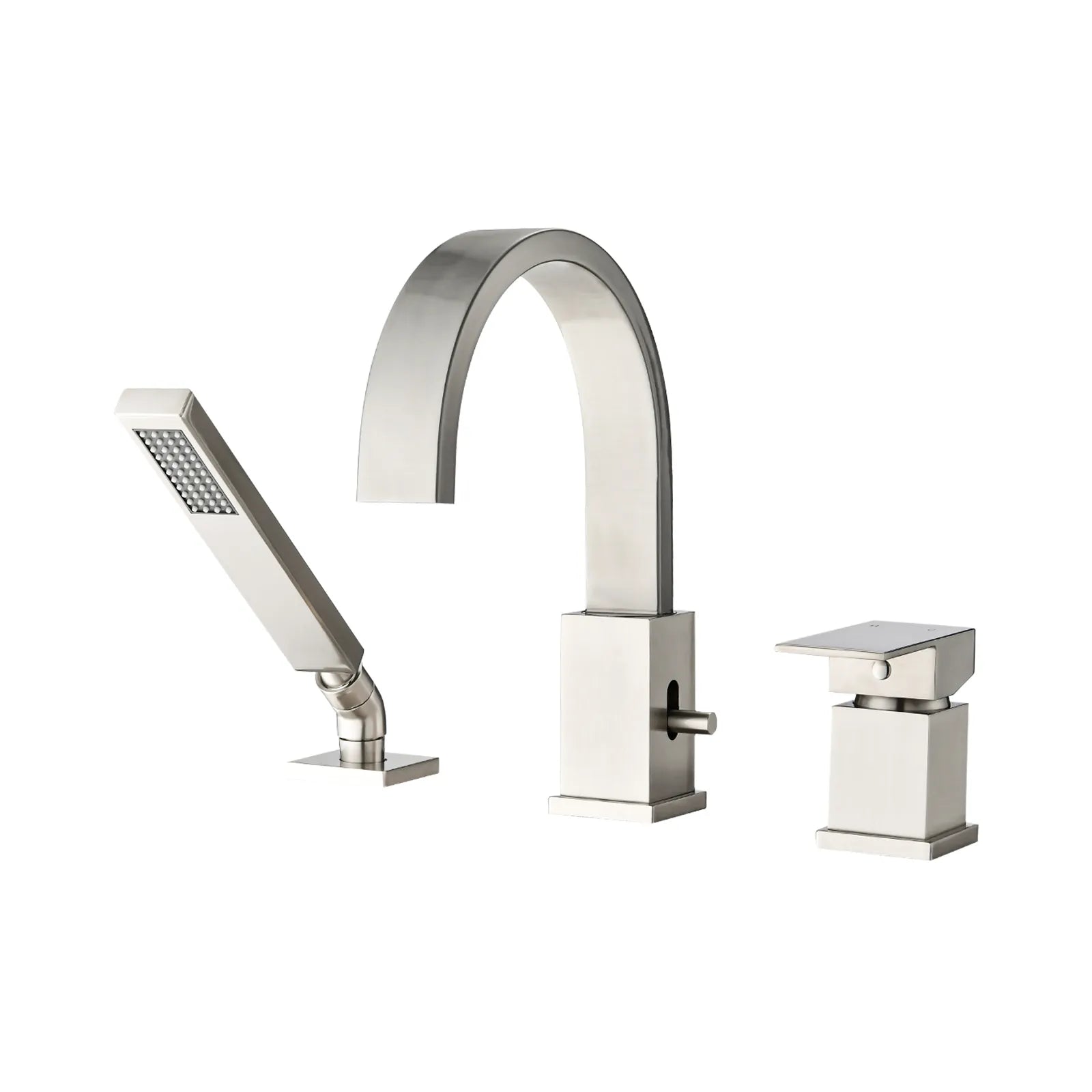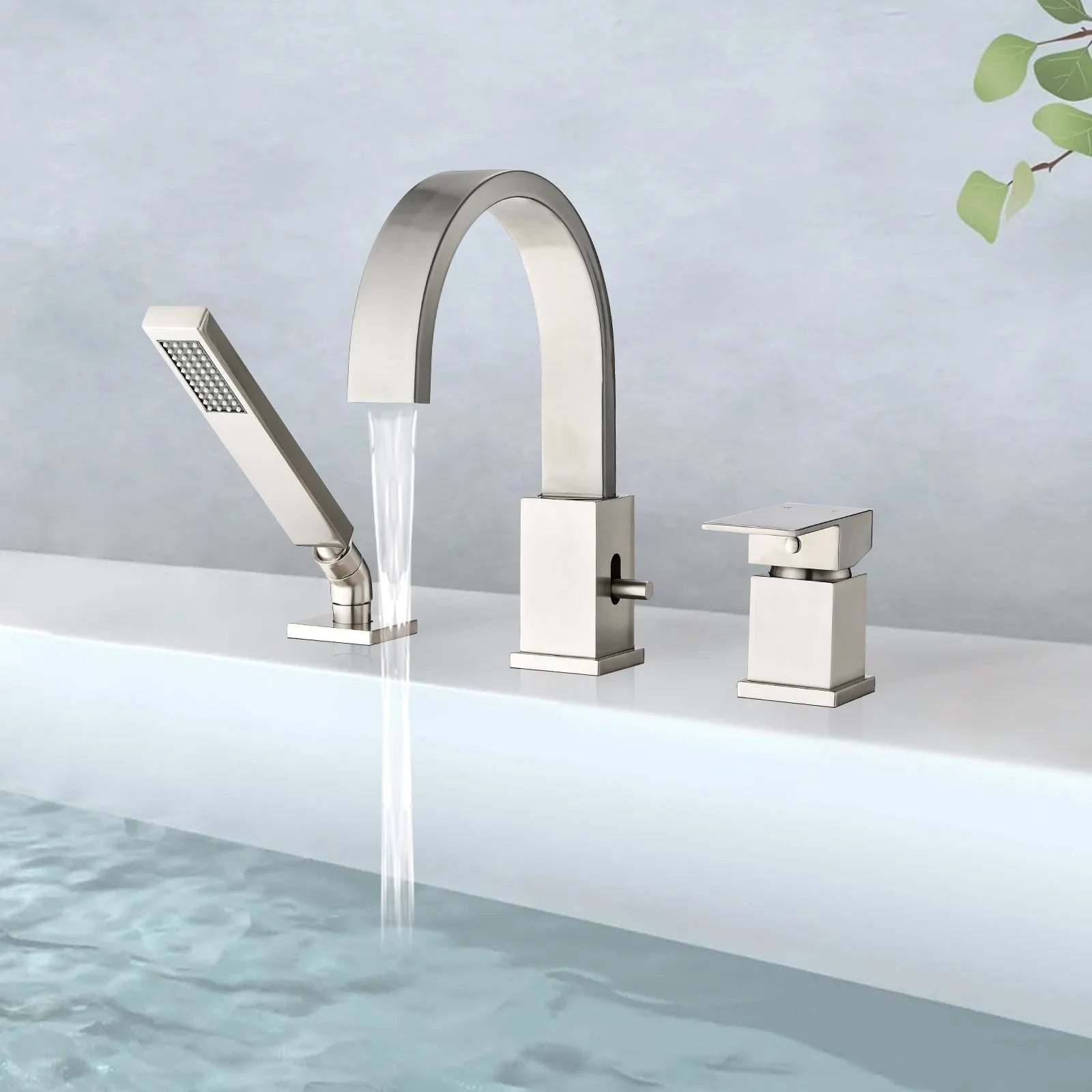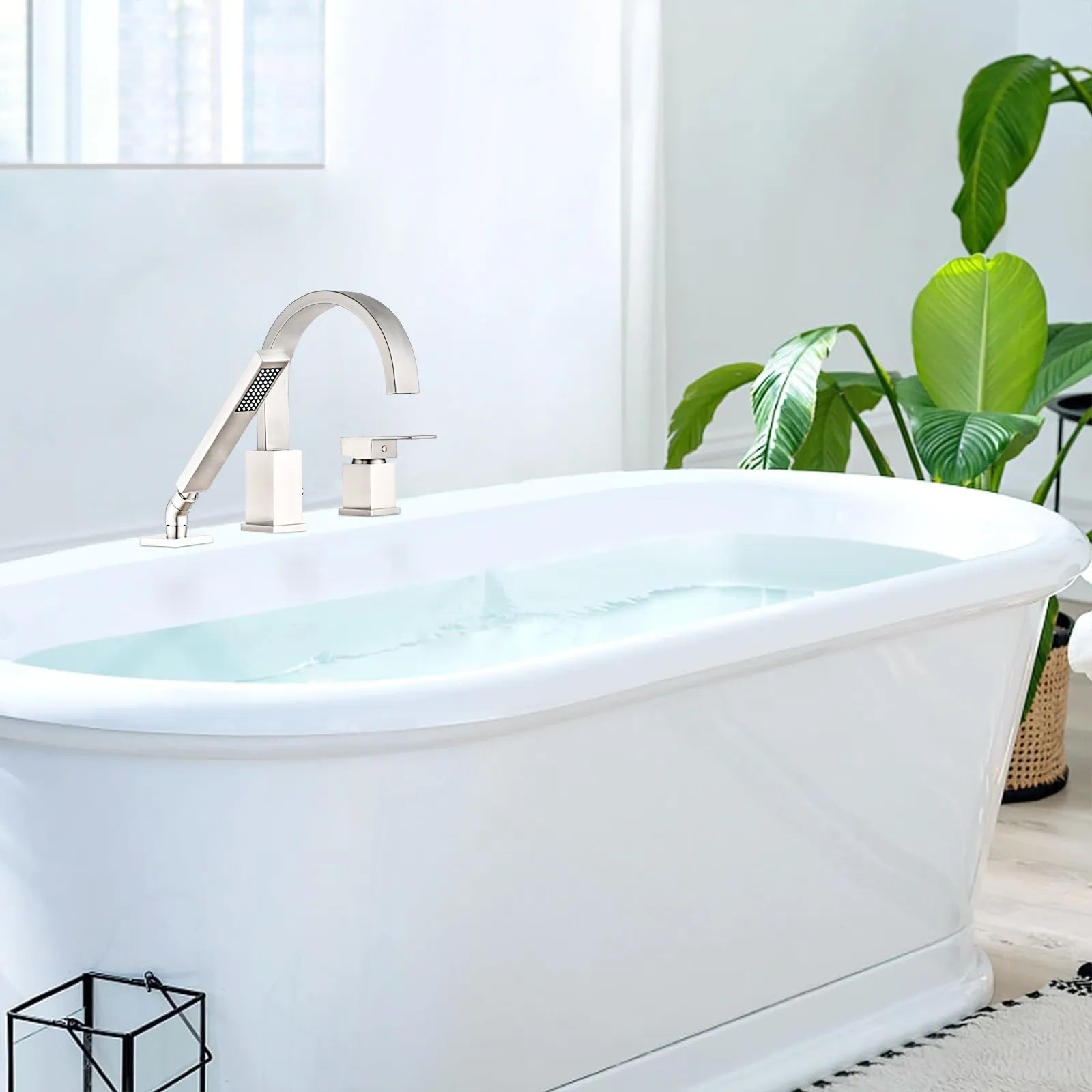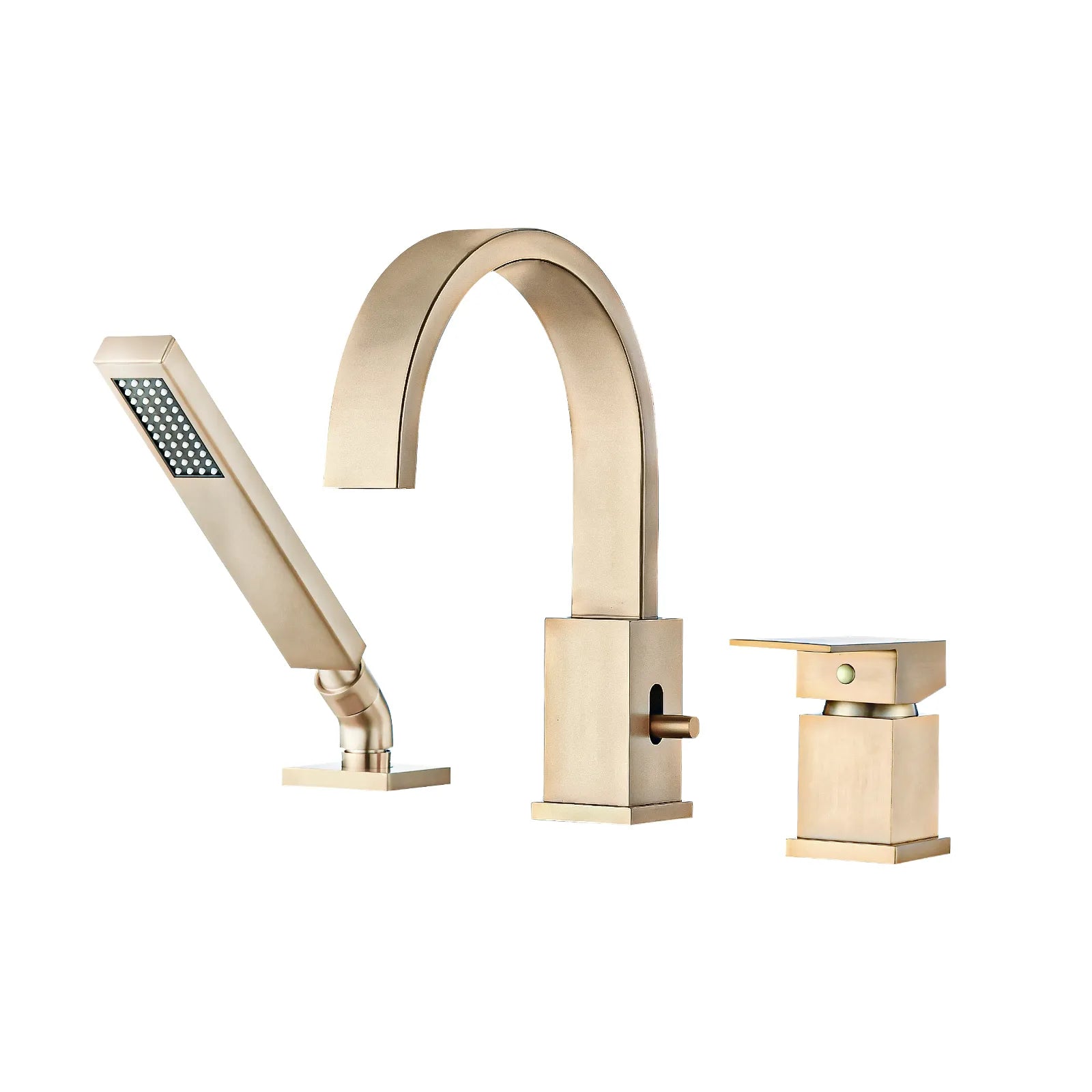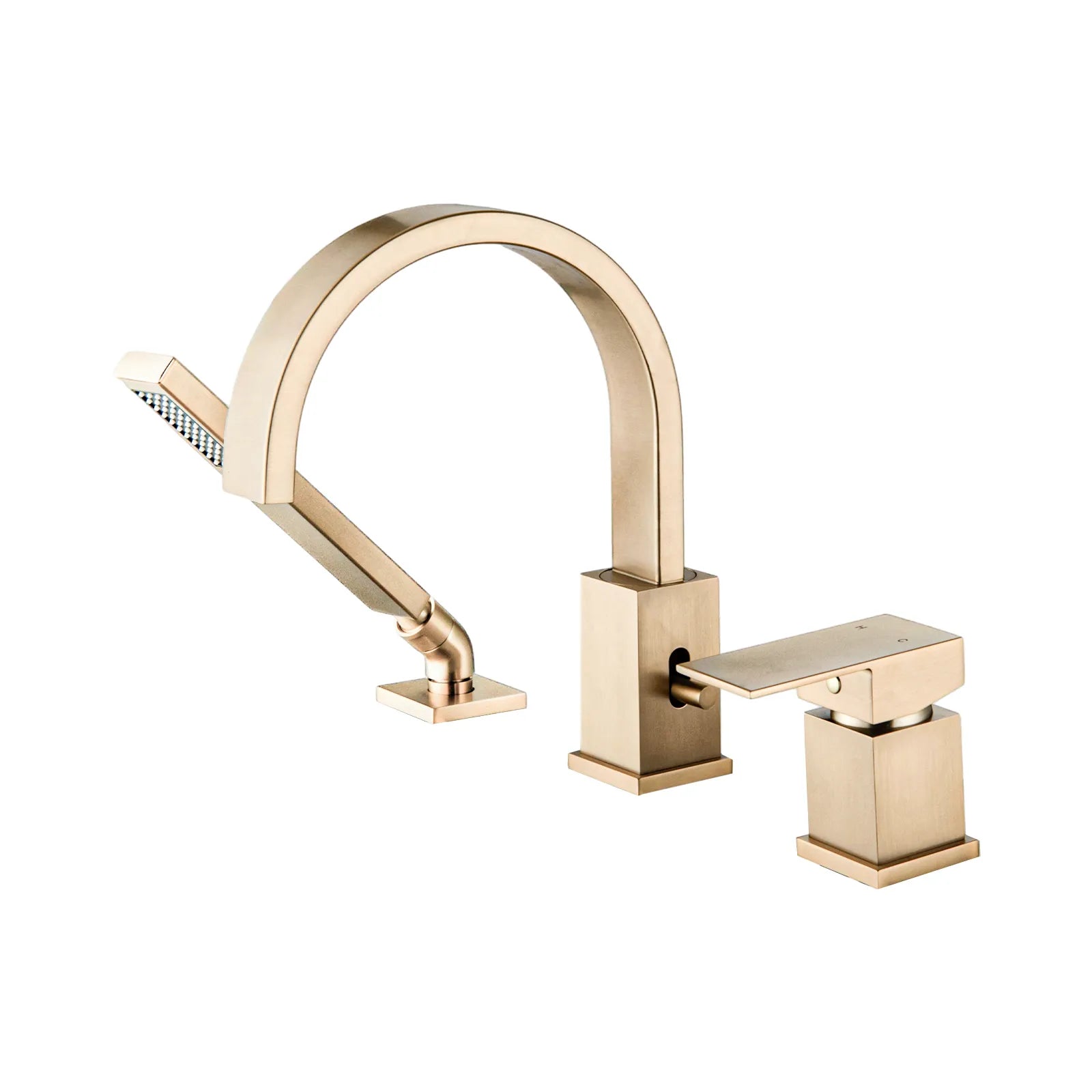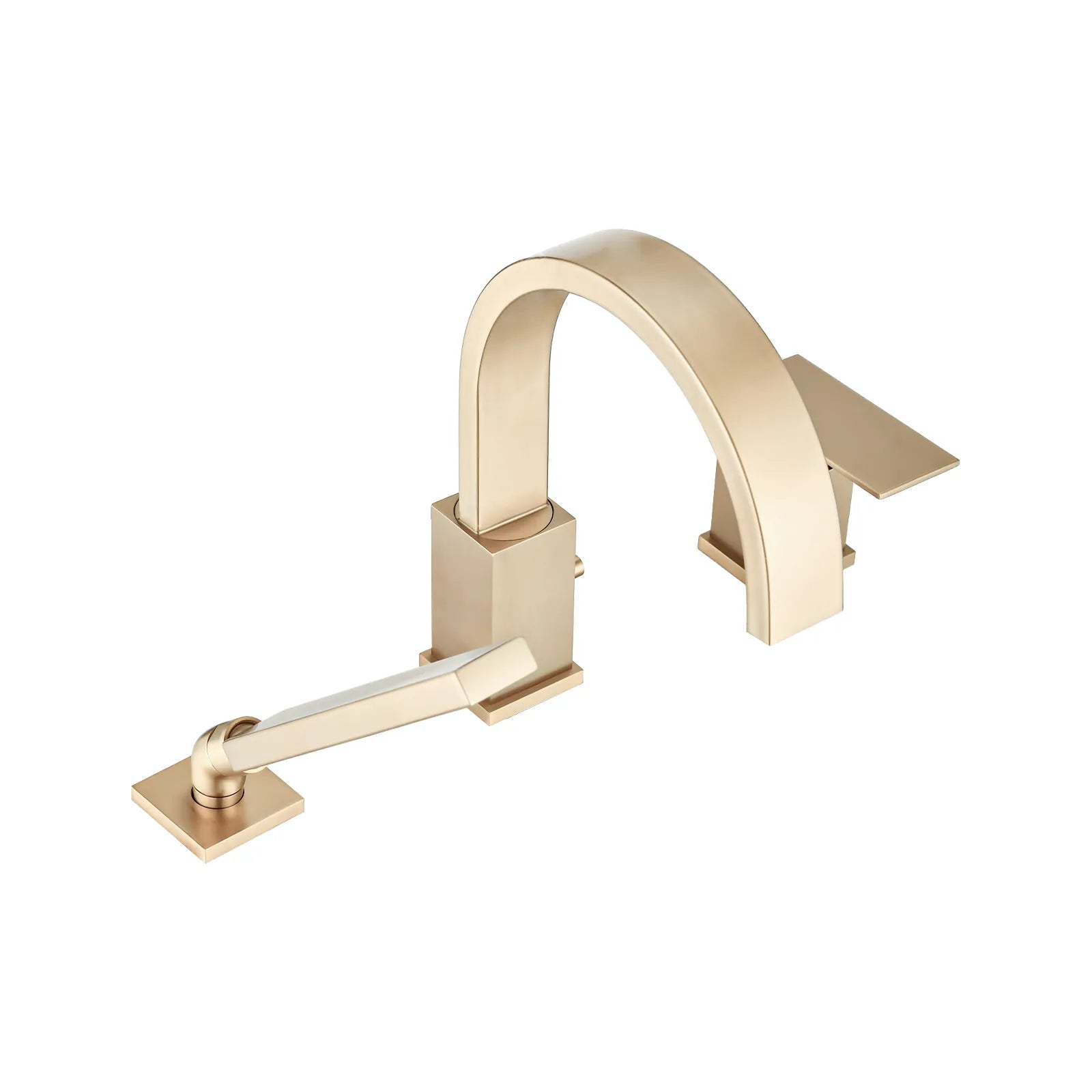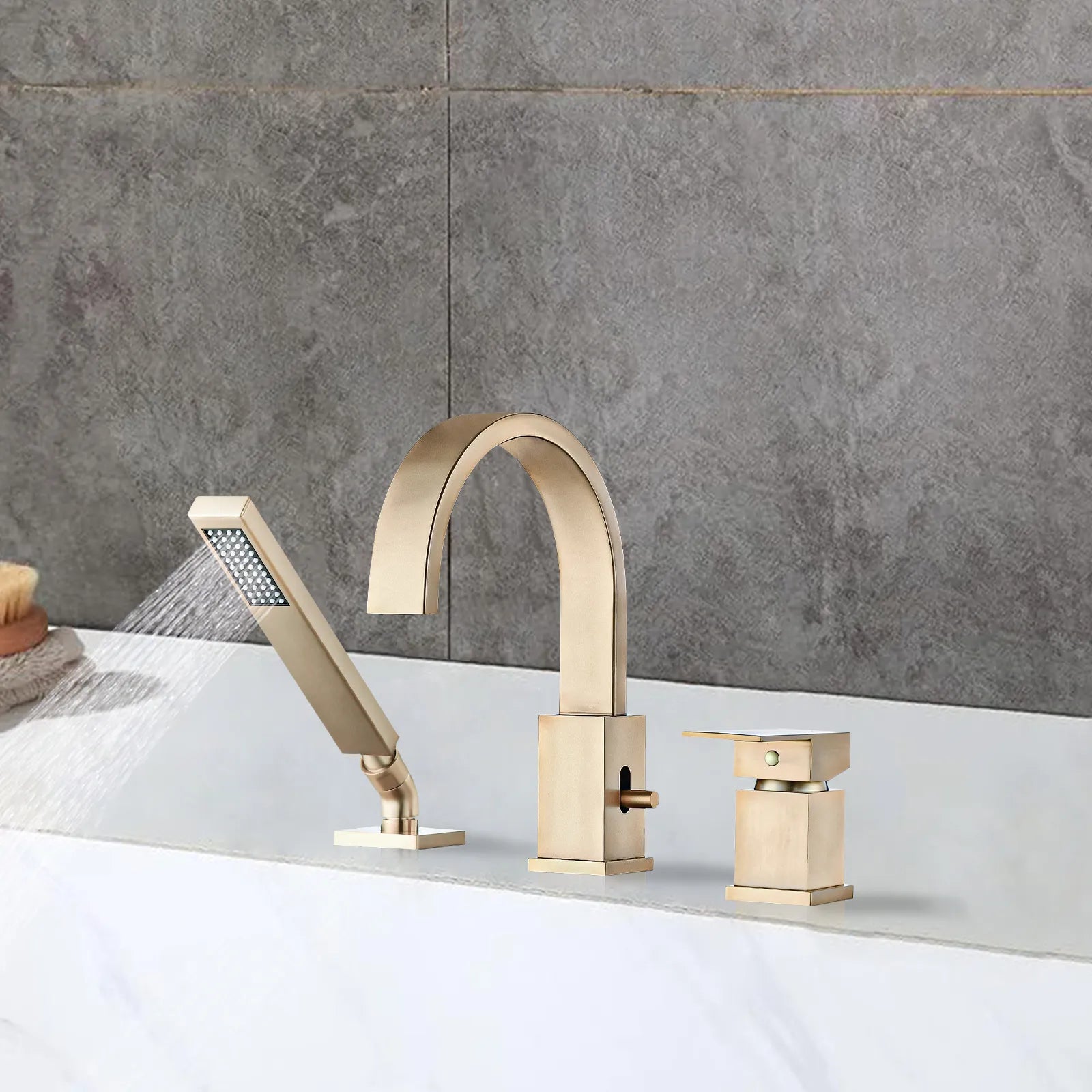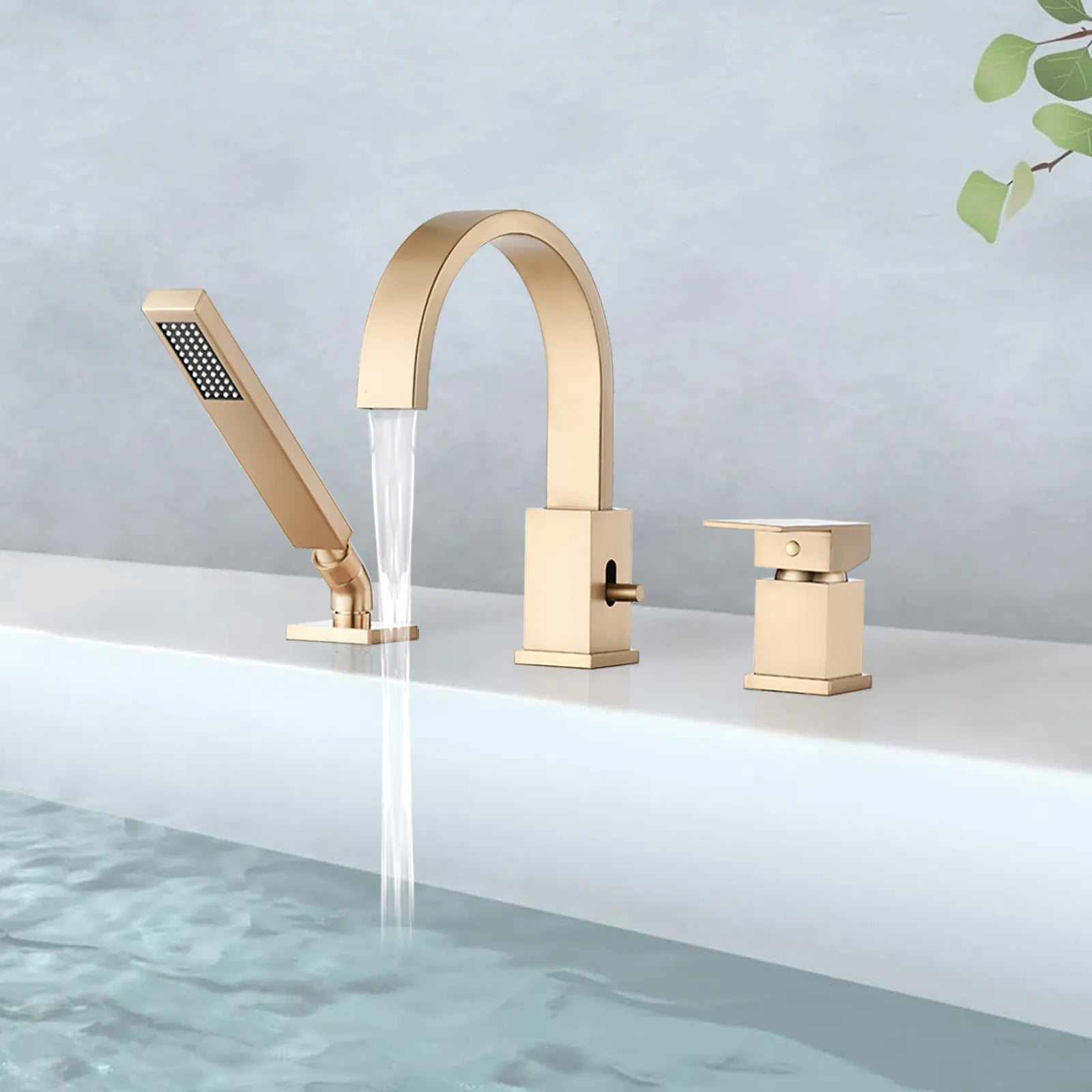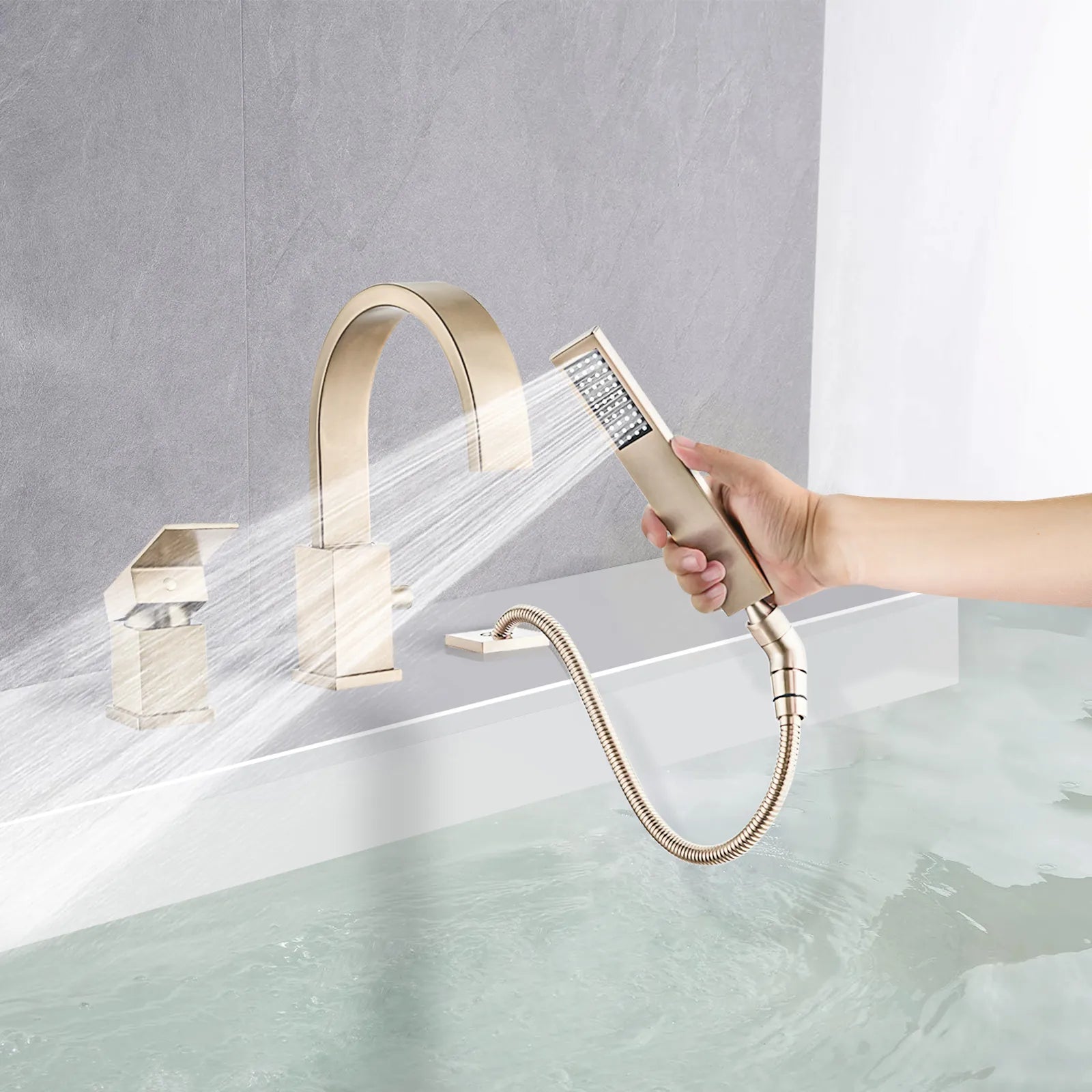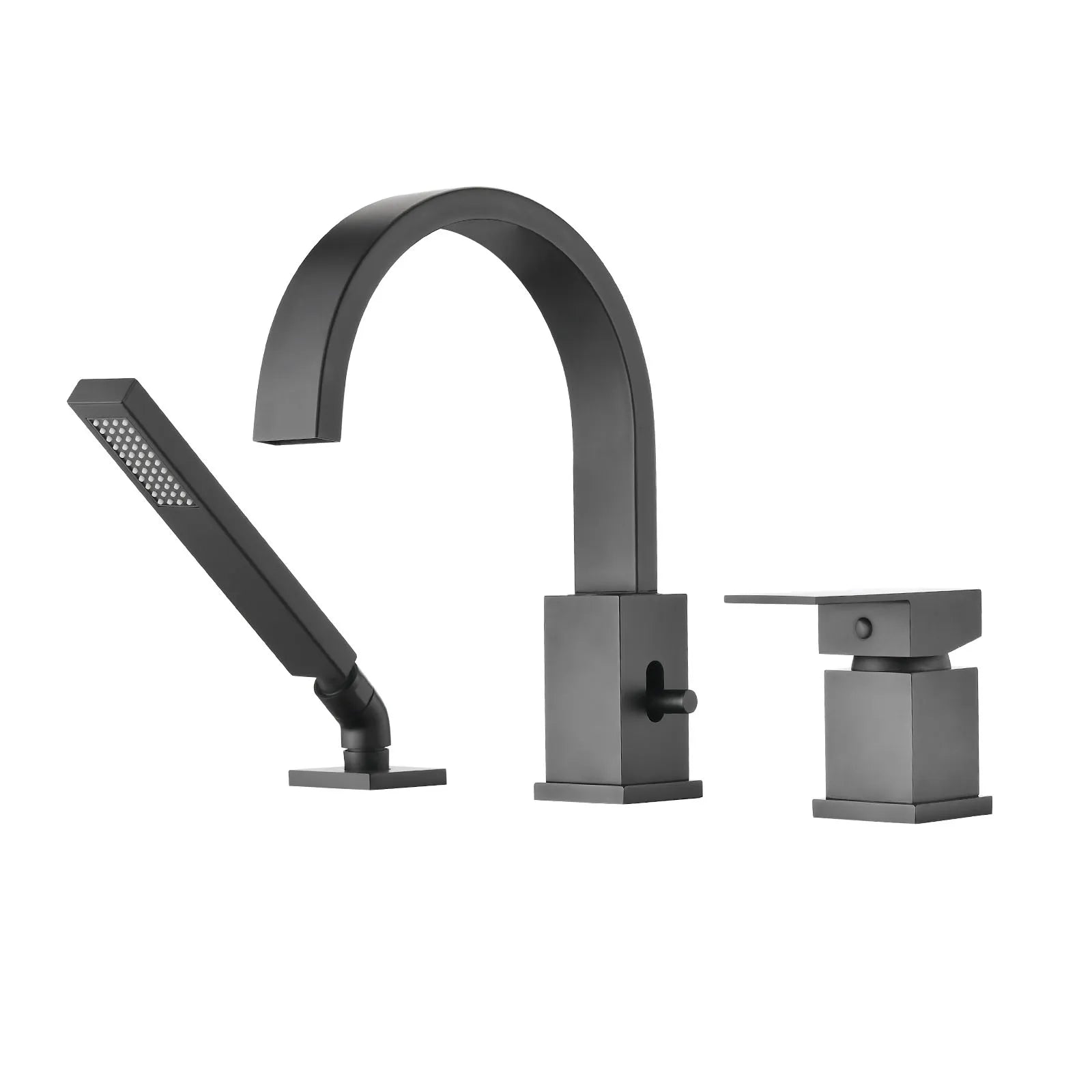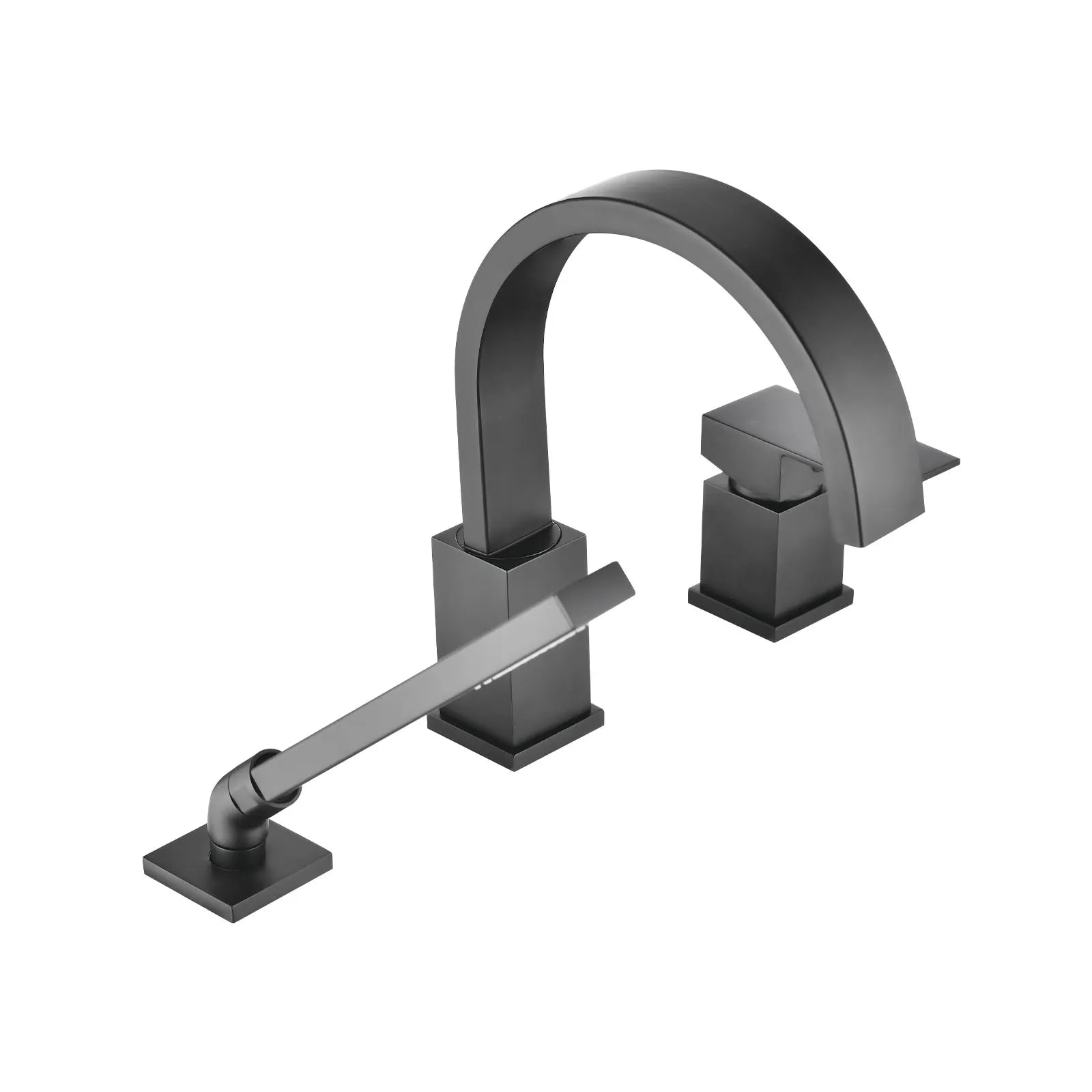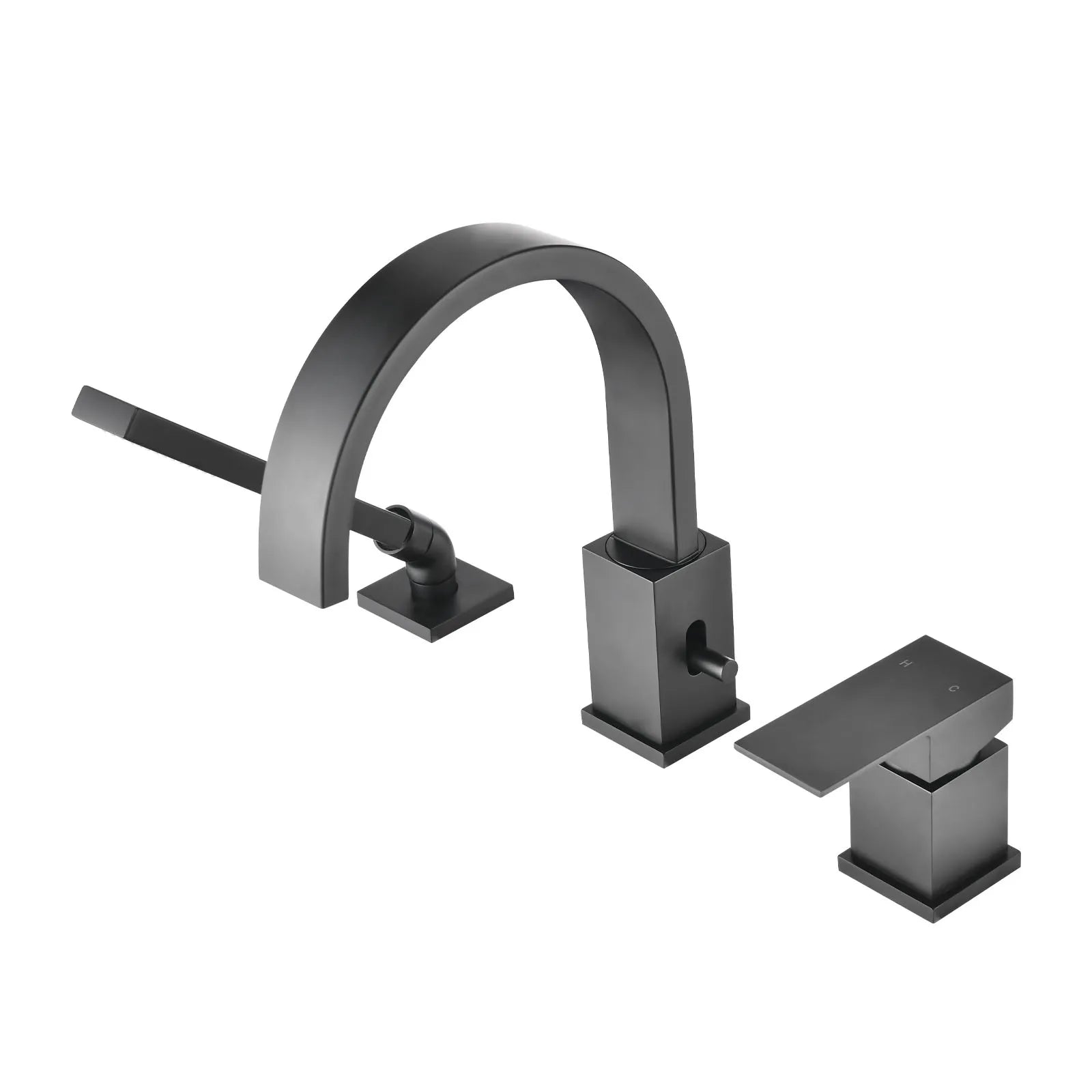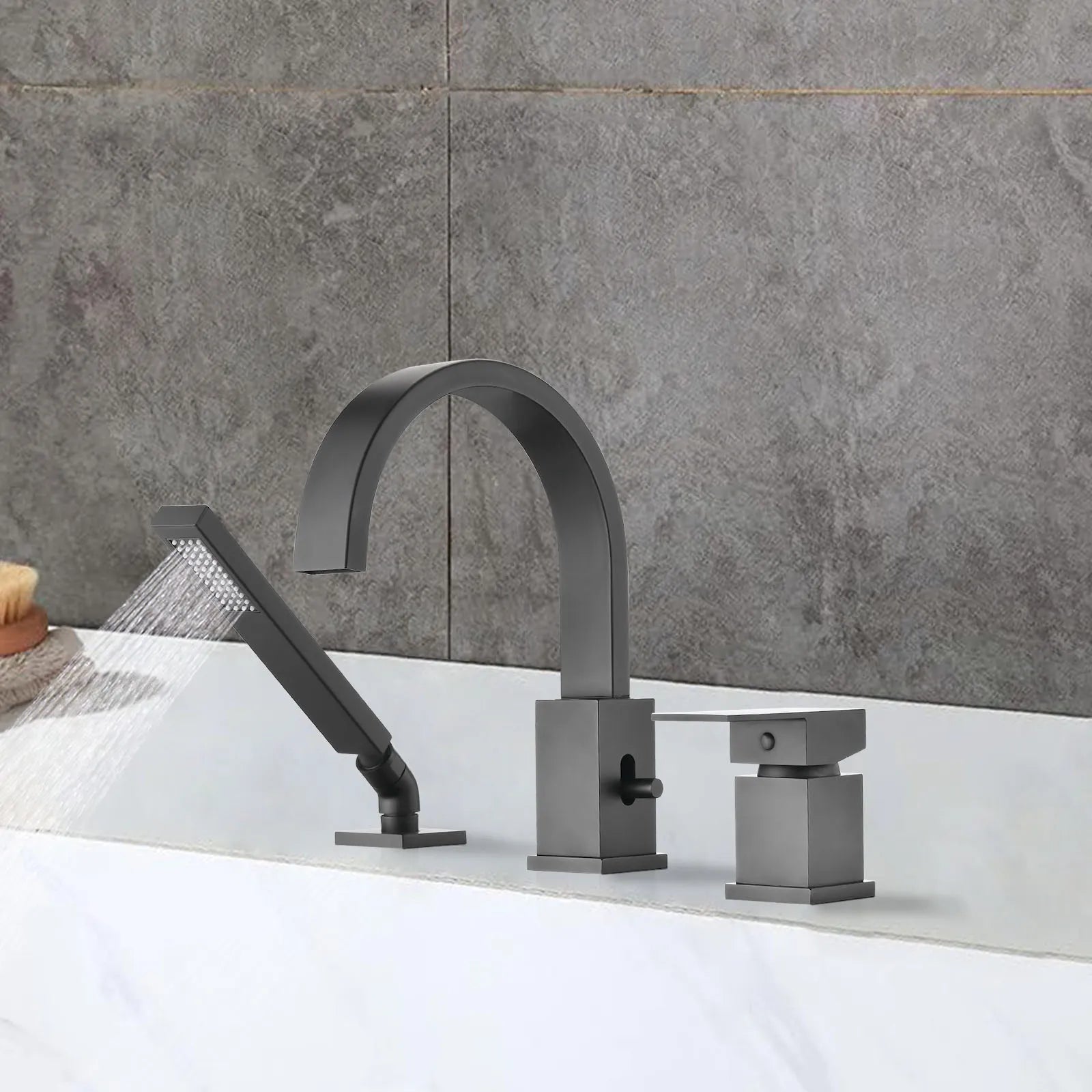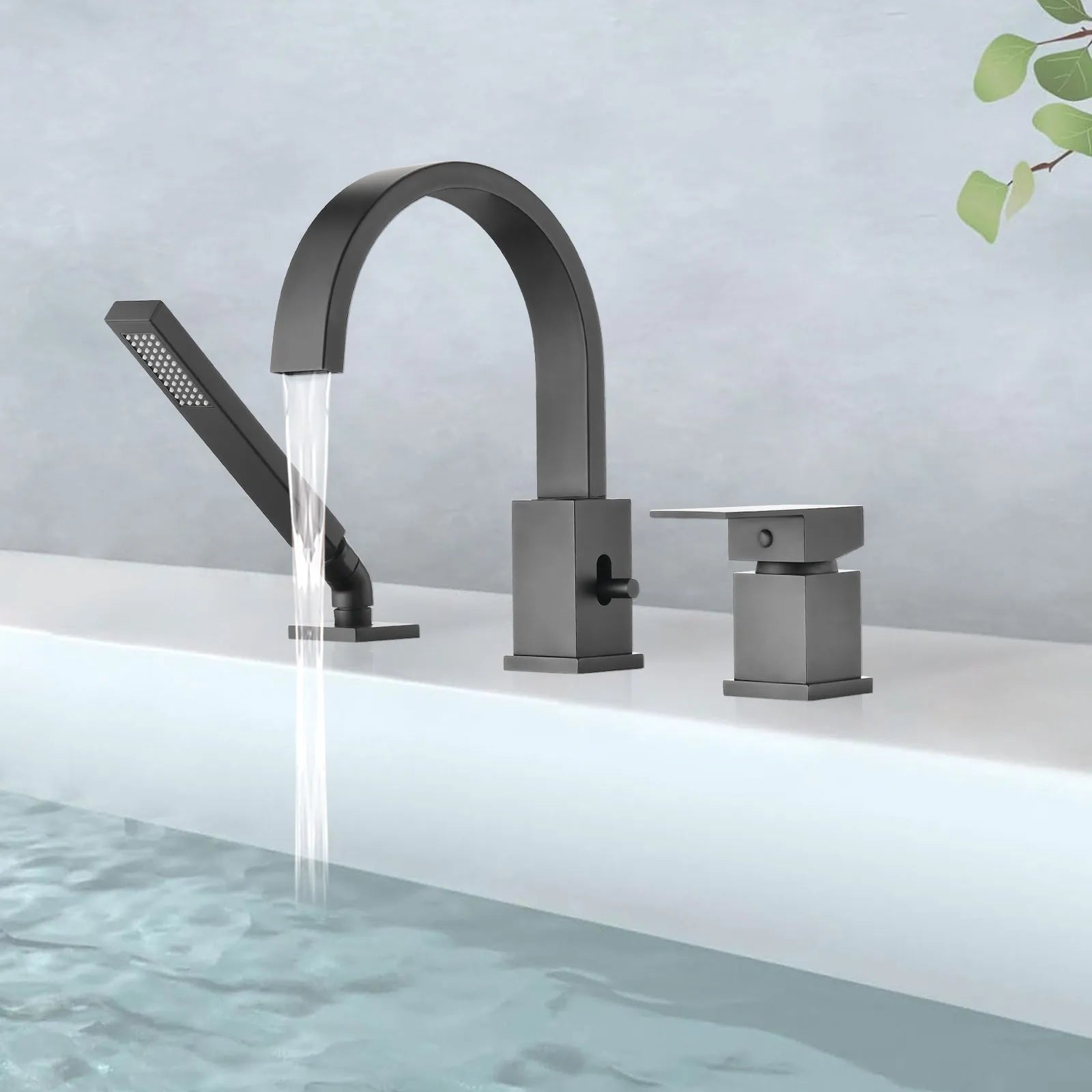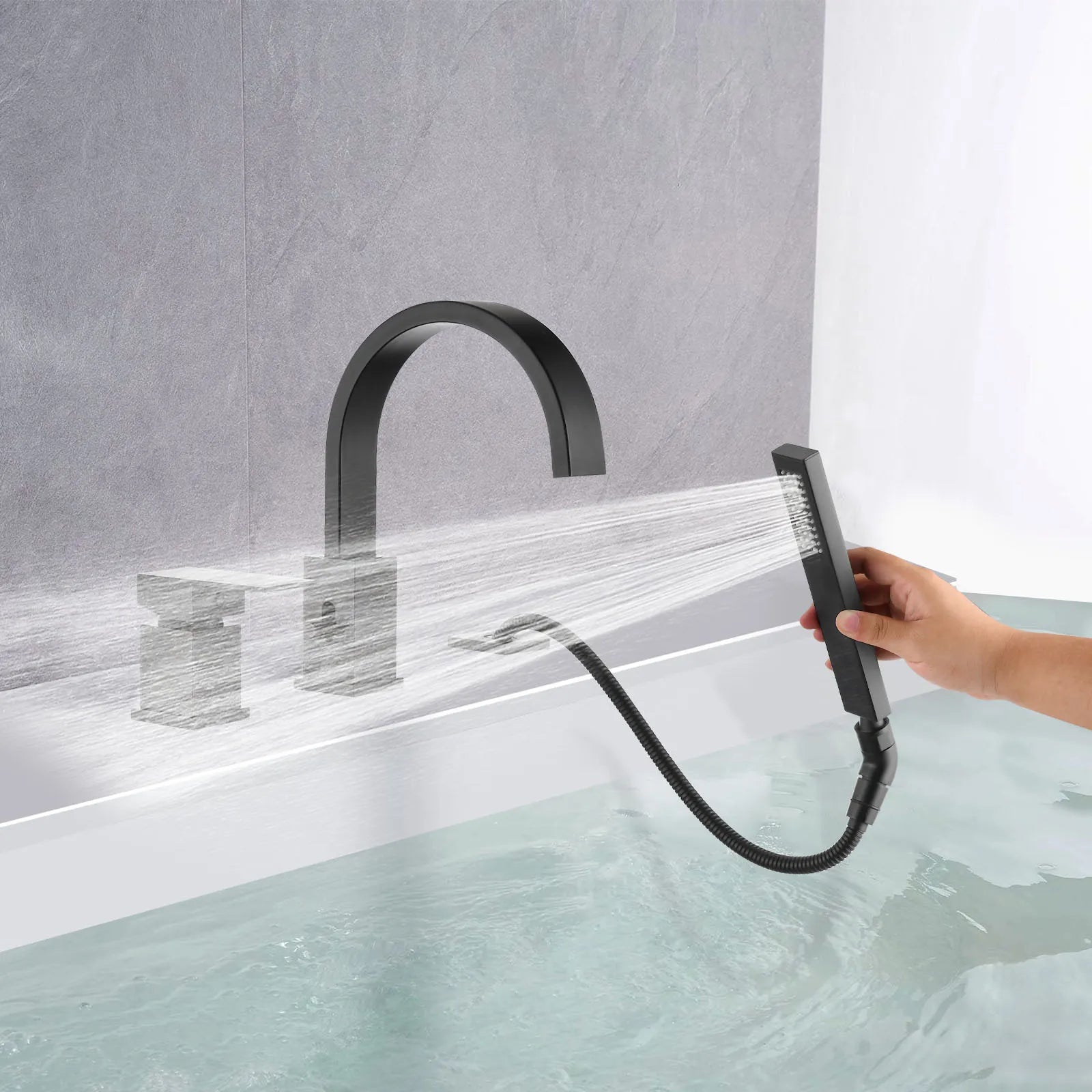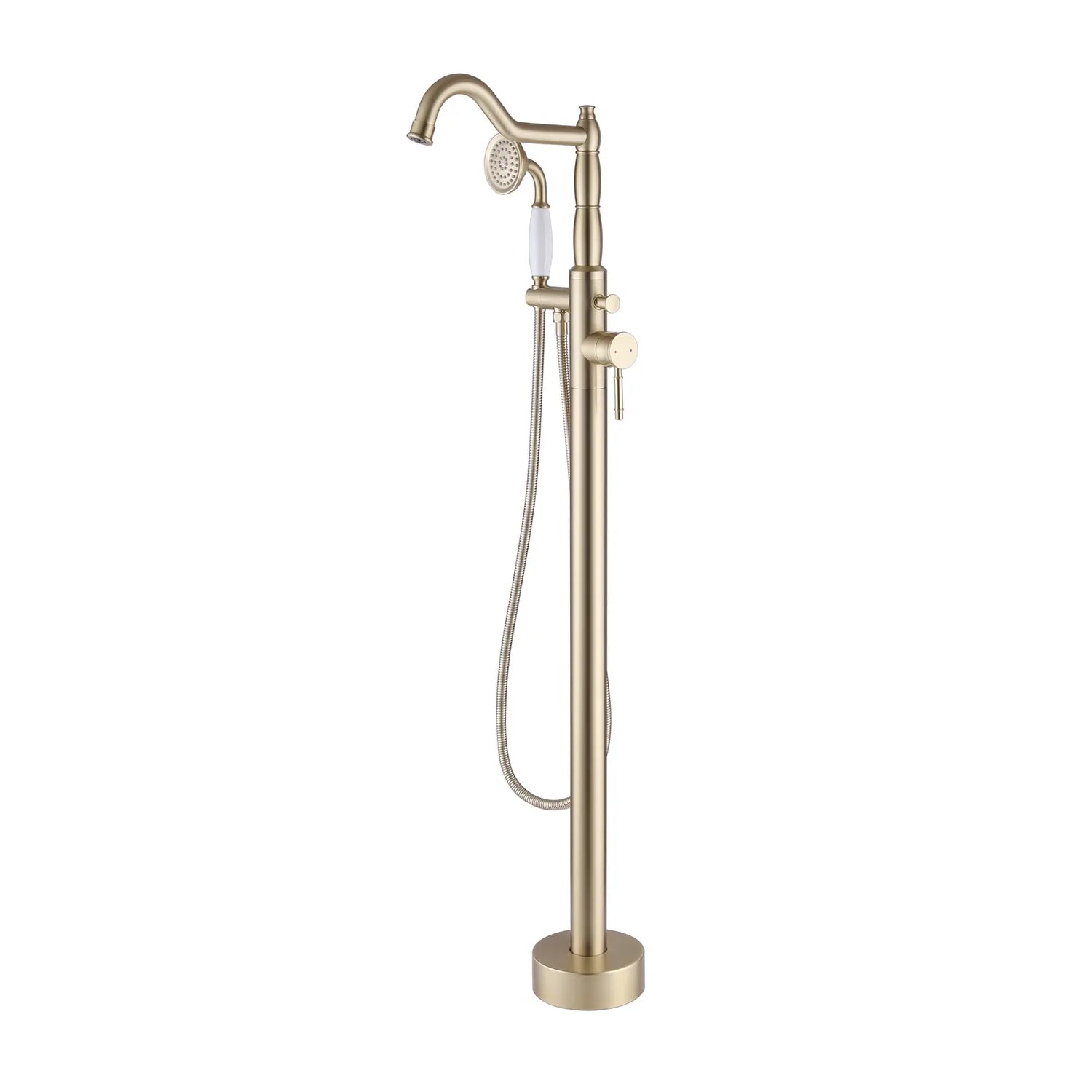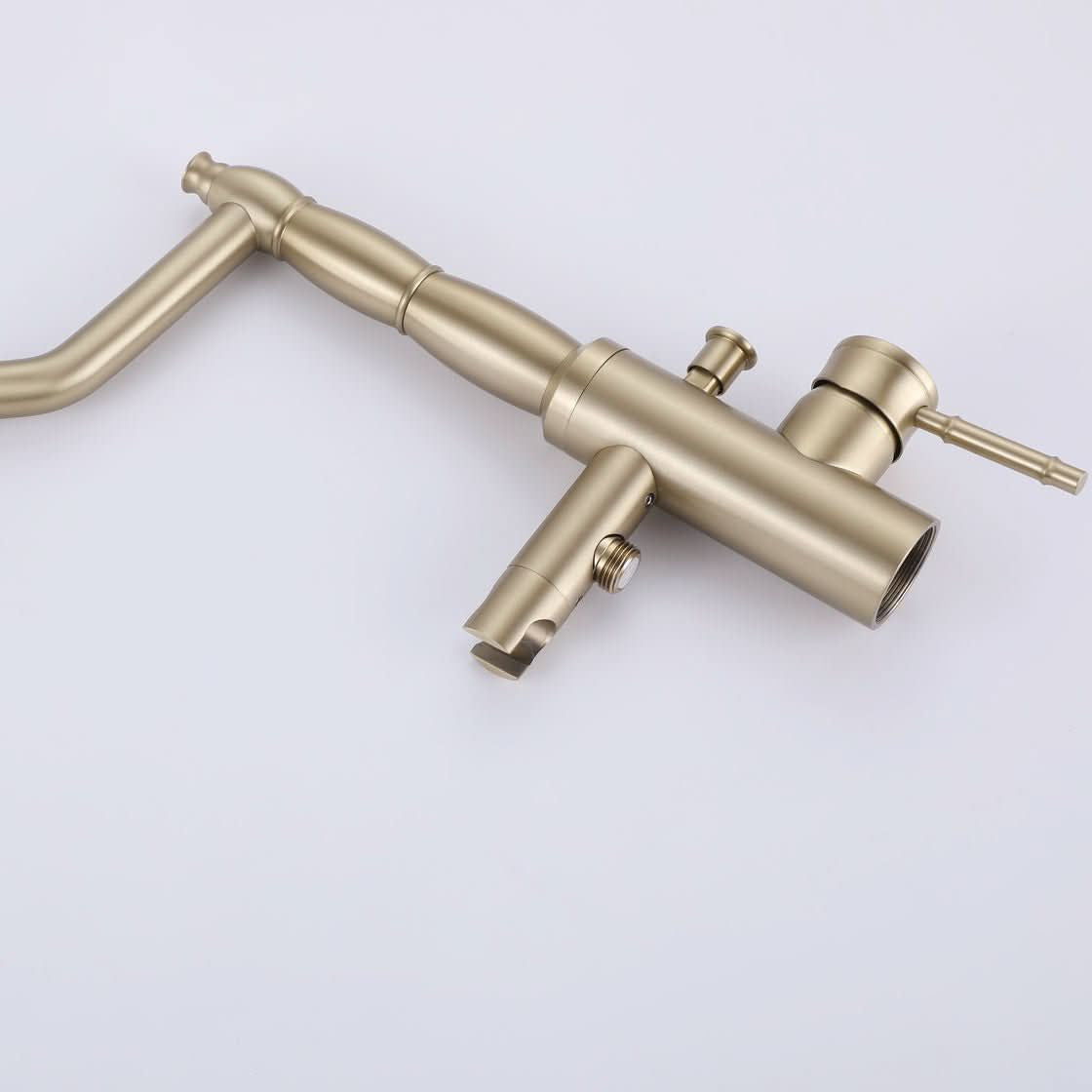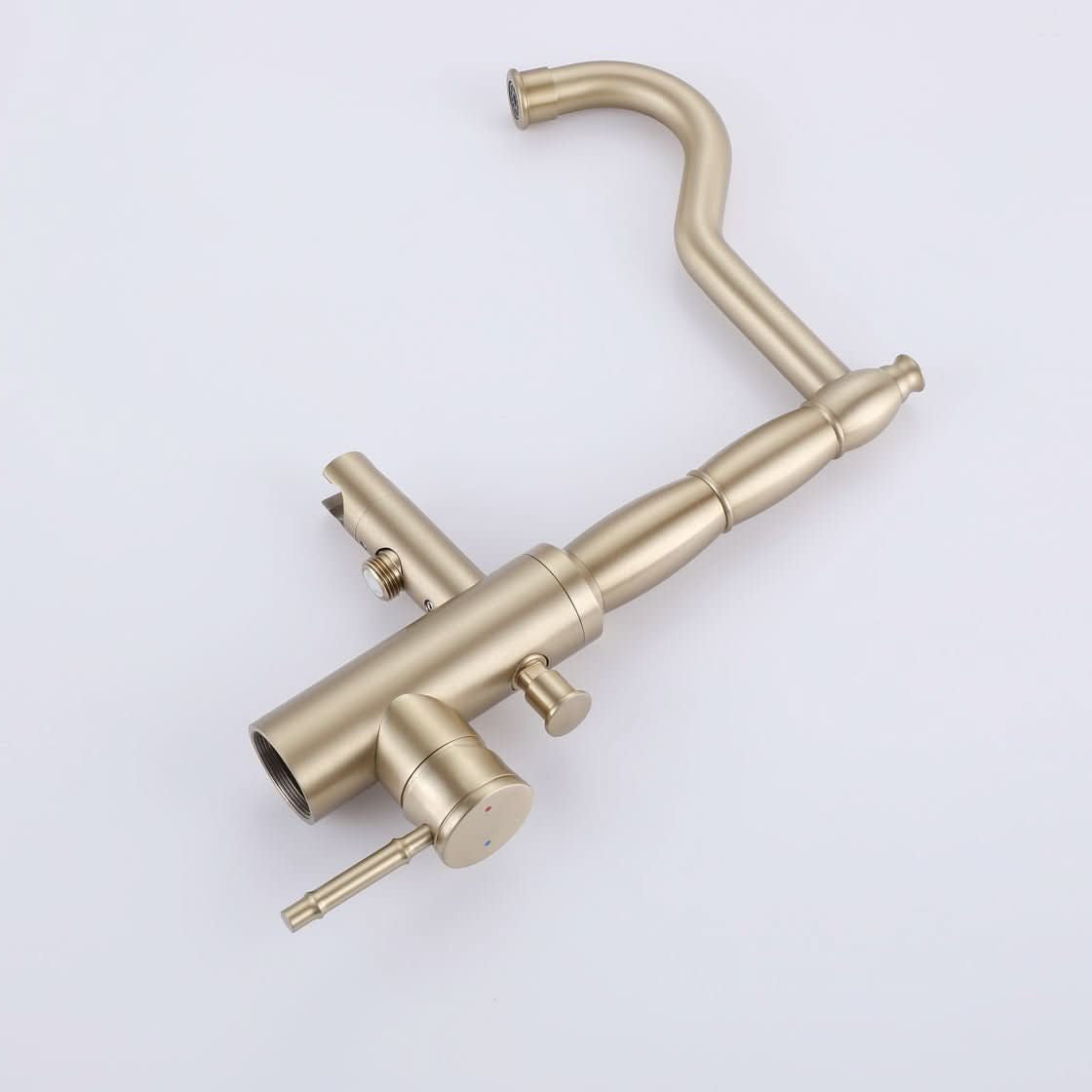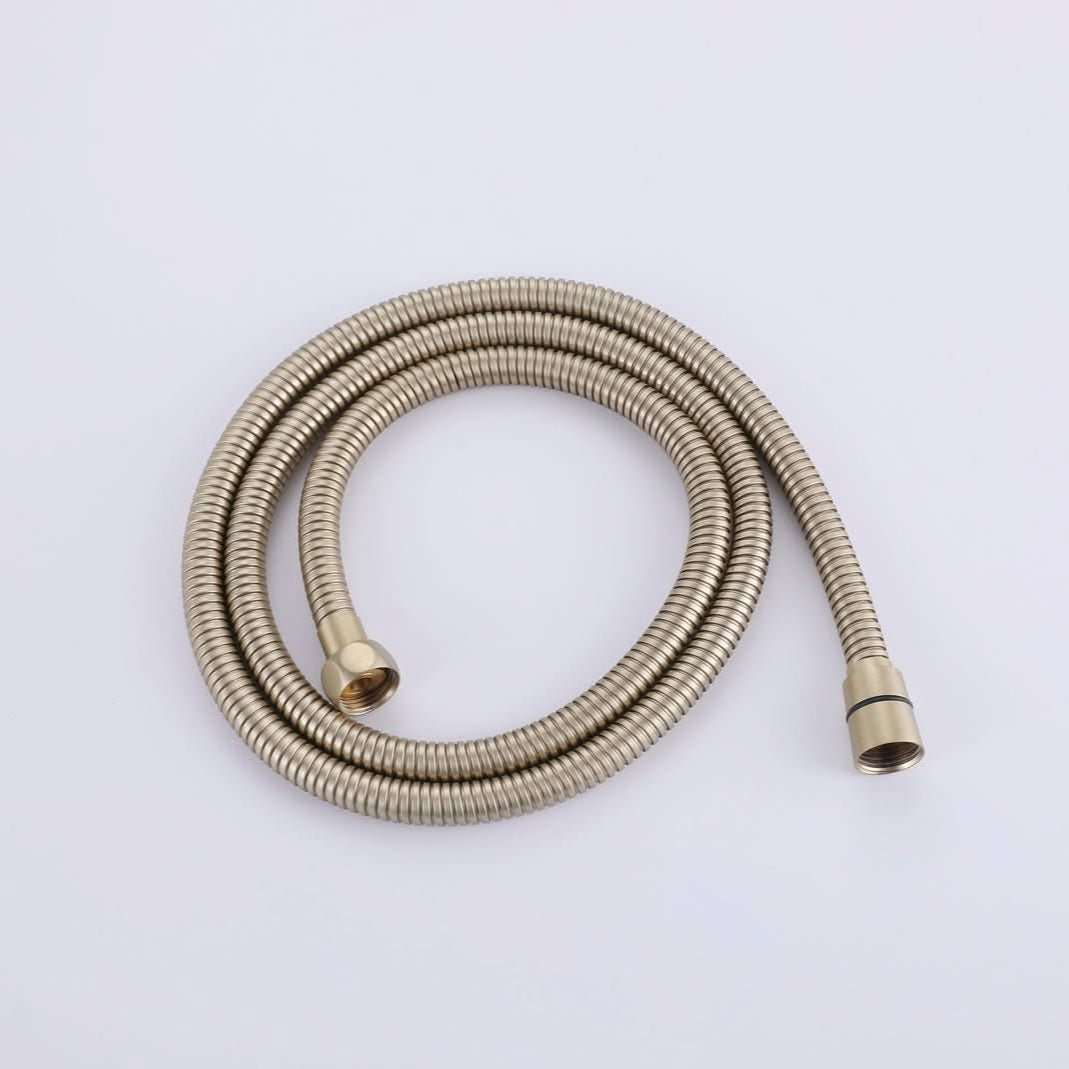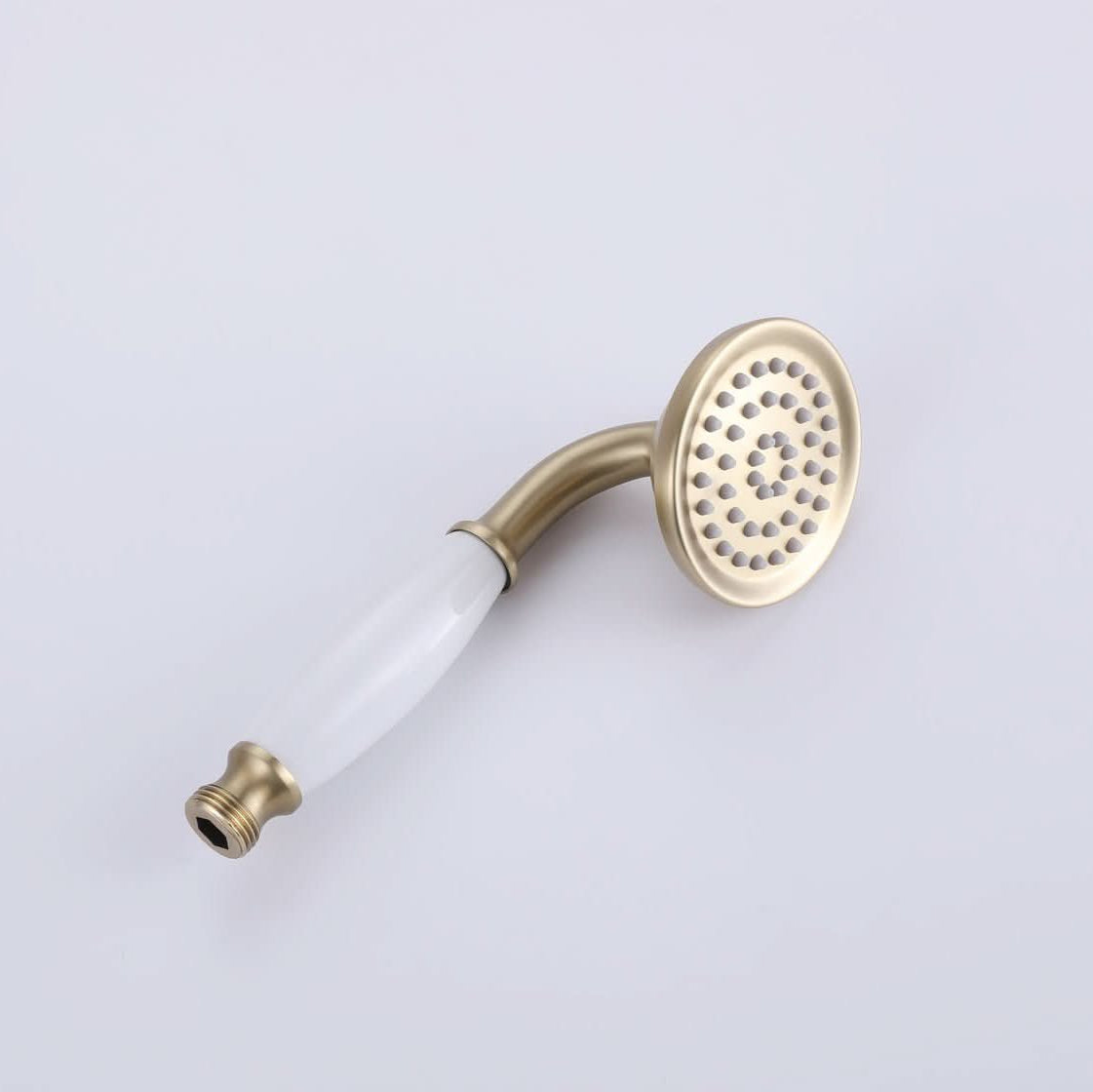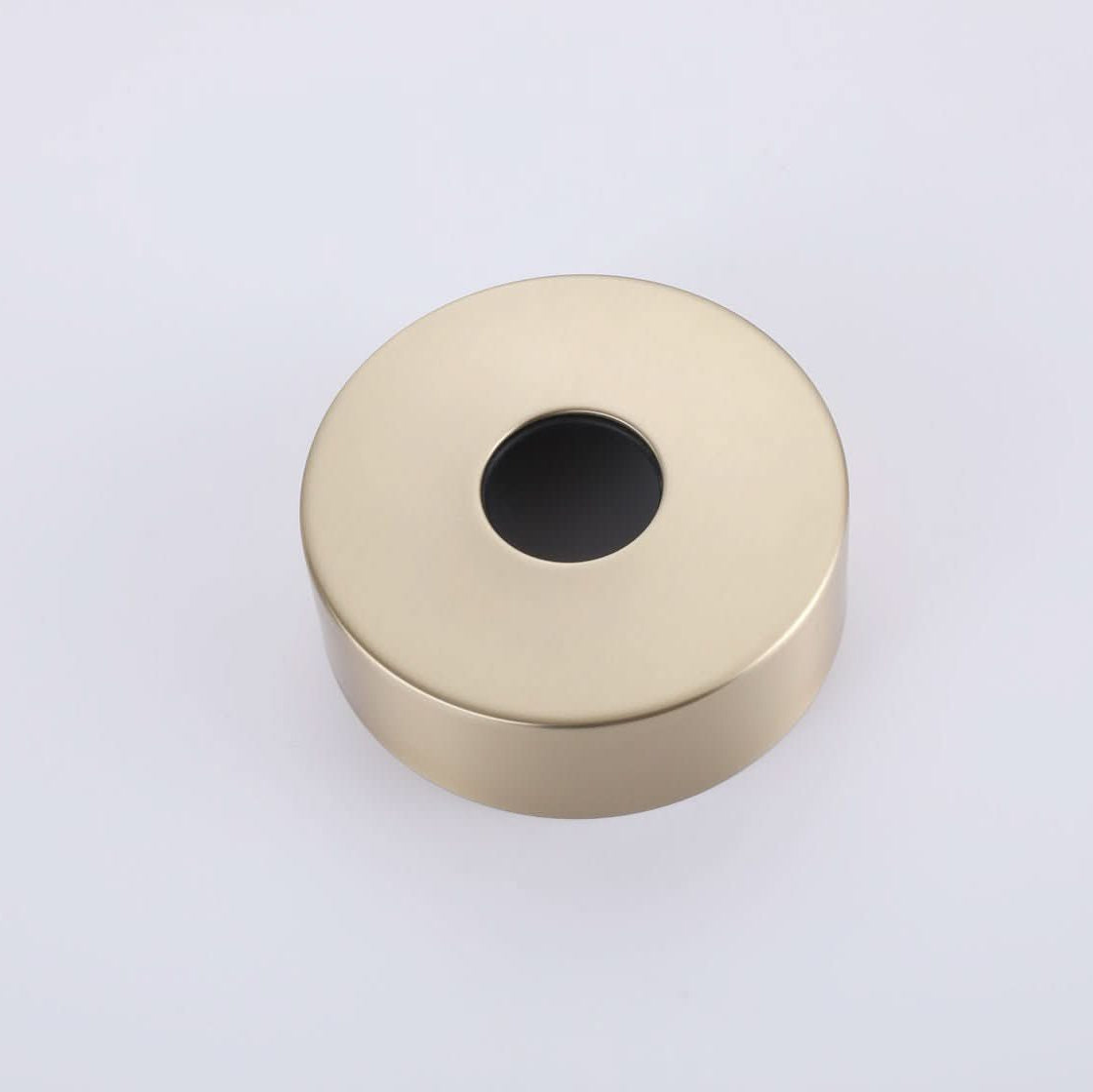Table of Contents
- 1. What Are Bathtub Faucet Valve Parts?
- 2. Common Signs of Leaks
- 3. How High Water Pressure Damages Valve Parts
- 4. Why Bathtub Faucet Valve Parts Wear Out
- 5. How to Check If Valve Parts Need Replacing
- 6. How to Choose the Right Bathtub Faucet Valve Parts
- 7. Replacing Parts in Older Homes
- 8. Installation Tips for Leak-Free Results
- 9. DIY or Hire a Plumber?
- 10. Conclusion
- 11. FAQ
- 12. Related Articles
Introduction
In an elaborately decorated bathroom that pays attention to details, the continuous dripping sound is often more disturbing than any visual flaw. This is not a decoration issue, nor is it necessarily a quality problem of the faucet itself. The fact is: Many people have overlooked one crucial detail - the aging or damage of bathtub faucet valve parts.
Data from the US Environmental Protection Agency (EPA) shows that on average, a household wastes about 9,400 gallons of water each year due to leaks, equivalent to the volume of an entire pool car. Perhaps you have already changed the faucet and upgraded the hardware, but the leakage still hasn't stopped? Perhaps the problem is simply "hidden somewhere you can't see".
This article will take you through the functions of bathtub faucet valve parts, signs of aging, replacement methods and purchase suggestions, combined with real experience and professional perspective, to help you avoid being "tortured" to sleep by the sound of water again and protect the quality of the home you invest in.

What Are Bathtub Faucet Valve Parts?
Faucet valve parts are the core components inside the faucet system that control water flow, regulate temperature and achieve leak-proof sealing. They include:
- Valve cartridge: Controls the mixture of hot and cold water and the water output
- O-ring: Seals the rotating parts to prevent dripping
- Rubber washer: A soft sealing component at the water flow terminal
- Valve seat: Metal socket, highly susceptible to corrosion
- Diverter valve: Switch the water flow direction (such as from the faucet to the shower)
Once these parts age or get damaged, it will directly lead to unstable water temperature, abnormal water flow, and even wake you up every night with the "tick-tock" sound of water. More importantly, these bathtub faucet valve parts don 't give a clear warning on the surface; you only realize their existence when problems break out.
Common Signs of Leaks
Most people's first reaction when facing a leaking bathtub is to tighten the handle or check the faucet interface, but very often these operations don't work. The following five common phenomena are often typical signs of problems with bathtub faucet valve parts:
- There was still dripping water after the faucet was turned off
- The water temperature fluctuates between hot and cold, and the control becomes less sensitive
- The water pressure suddenly decreased.
- The handle doesn't turn smoothly, with resistance or noise
- The switching of water flow direction is incomplete or fails
These seemingly trivial minor issues are actually more common in hard water areas such as the central and southwestern United States - scale deposition and mineral crystallization accelerate the aging of valve parts. According to the 2022 Angi user survey data, over 60% of users still misjudged the leakage problem as "loose faucet" rather than internal structural damage after it occurred.
How High Water Pressure Damages Valve Parts
The water pressure of the tap water systems in a large number of households in the United States is generally higher than 70 PSI, which is much higher than the standard design pressure-bearing value (50-60 PSI) of most bathroom valves. This prolonged overpressure operation causes the bathtub faucet valve parts, especially the cartridge and rubber washer, to deform under pressure and gradually lose their sealing effect.
High water pressure not only makes leakage problems more likely to occur, but also significantly reduces the service life of valve. Research shows that in areas without pressure reducing valves installed, the rate of valve damage is nearly 40% higher than that in areas with normal pressure.

Why Bathtub Faucet Valve Parts Wear Out
- Hard water mineral deposition: Calcium and magnesium ions in water form scale, adhering to the surface of valve seats or O-rings, gradually corroding or blocking the sealed channels.
- Frequent operation wear: Dozens of on-off operations every day cause fine cracks in the valve core or gasket, affecting the accuracy of water flow regulation.
- Material aging: Rubber washers and O-rings are prone to aging and cracking in an environment with alternating dry and wet conditions.
Especially in closed or wall-mounted faucet systems, these bathtub faucet valve parts are more likely to be overlooked, but they are often the starting point of the problem.
How to Check If Valve Parts Need Replacing
To confirm whether parts need to be replaced, actually, no professional tools are required. You can make a judgment through the following steps:
- Close the main water valve
- Remove the faucet handle and decorative panel
- Pull out the valve cartridge and observe whether there are cracks, scale or discoloration
- Check whether the O-ring is aged or deformed
- Gently press the valve seat area with a dry paper towel to confirm if there is any water seepage
These steps usually only take 15 to 20 minutes. If you find that the valve cartridge is swollen and deformed, or the washer is hard and falls off, it indicates that it's time to replace it.
How to Choose the Right Bathtub Faucet Valve Parts
Mid-to-high-end consumers often pay more attention to durability, compatibility and design uniformity. The following are practical suggestions for purchase:
Material selection
- Brass valve cartridge: Corrosion-resistant, structurally stable, suitable for long-term use
- Ceramic sealing system: Smooth operation, tighter sealing, suitable for high-end series of mainstream brands
- Plastic components: Suitable for budget-sensitive users, they have a relatively short lifespan but offer high cost performance
Brand compatibility
Brands such as ACE DECOR, Moen, Kohler, and Delta usually use exclusive specifications. Please confirm the valve model or measure the size before purchasing, or take photos and contact the merchant's customer service for identification.
Style and Beauty
If the faucet in your home is decorated with brushed metal or chrome plating, it is recommended to purchase a valve trim kit of the same style to maintain overall visual consistency and avoid a sense of incongruity after replacement.
After-sales guarantee
High-quality merchants should offer return and exchange guarantees as well as quality assurance services. In our recommendation link, all bathtub faucet valve parts come with a 30-day no-reason return and up to 1 year warranty. Buy with peace of mind.
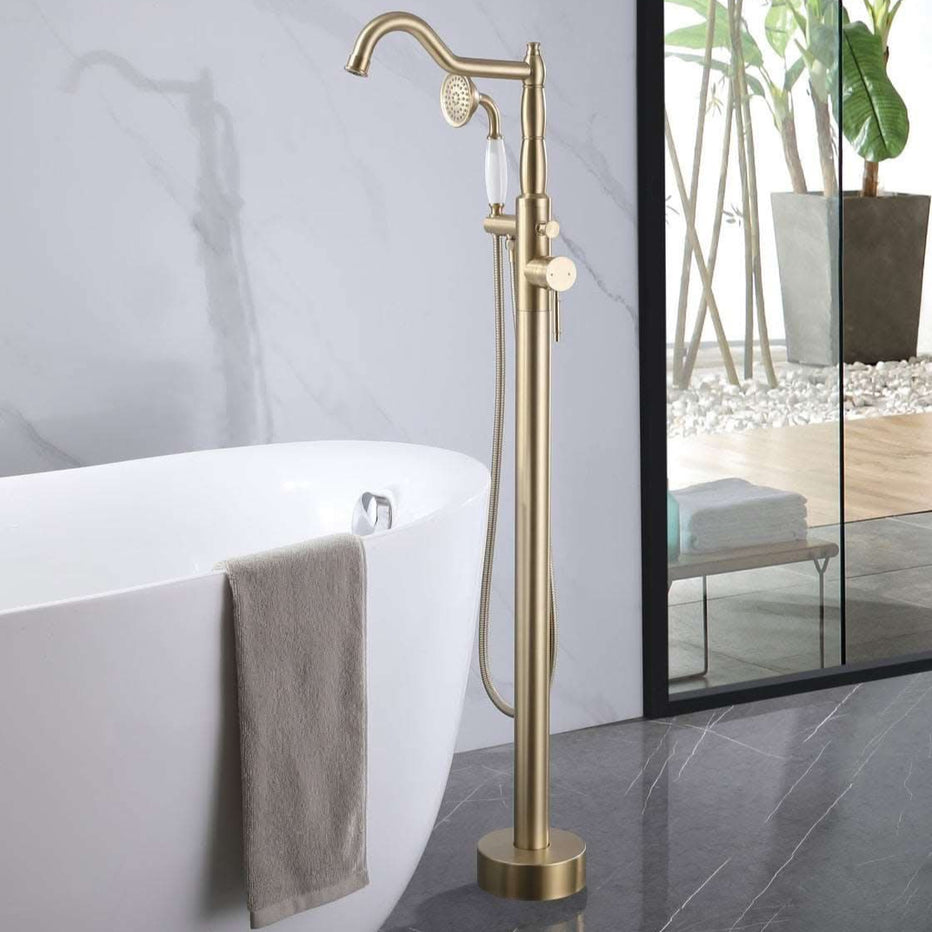
Replacing Parts in Older Homes
Old residential buildings built before 1990 tend to have the following problems when replacing bathtub faucet valve parts:
- The pipe joint is rusty and stuck, making it difficult to disassemble
- The old model of valve has been discontinued and universal compatible parts need to be used
- The embedded structure of the wall limits the operating space
If your faucet looks "quite normal" but has been in use for over five years, it is strongly recommended that you check the valve condition during your next renovation to avoid large-scale repairs due to rust on the interfaces.
Installation Tips for Leak-Free Results
The root cause of many failed DIY replacements is actually not the quality issue of the components, but the neglect of the following key steps:
- The interface was not thoroughly cleaned and the old scale was not removed
- The teflon sealing tape is wound in the wrong direction
- The O-ring is not lubricated and is prone to cracking or sliding
- Excessive tightening led to the fracturing of the valve core
Installing bathtub faucet valve parts properly is not just about "putting them in", but about making sure every seal fits perfectly. It is recommended to apply food-grade silicone grease to all sealing rings to enhance the installation success rate and the durability of the seal.
DIY or Hire a Plumber?
If you 're dealing with an open, standard-sized faucet and have some basic hands-on skills, it' s perfectly possible to DIY replace bathtub faucet valve parts.
But if you encounter these situations, it is recommended that you hire a professional plumber:
- The embedded faucet in the wall has a complex structure
- Problems occurred simultaneously in multiple valves
- Metal corrosion or loose interfaces were encountered during disassembly
HomeAdvisor data in 2023 shows that the average labor cost for a professional plumber to replace a valve is $150 to $280, including basic diagnosis and installation, with slight differences depending on the region.
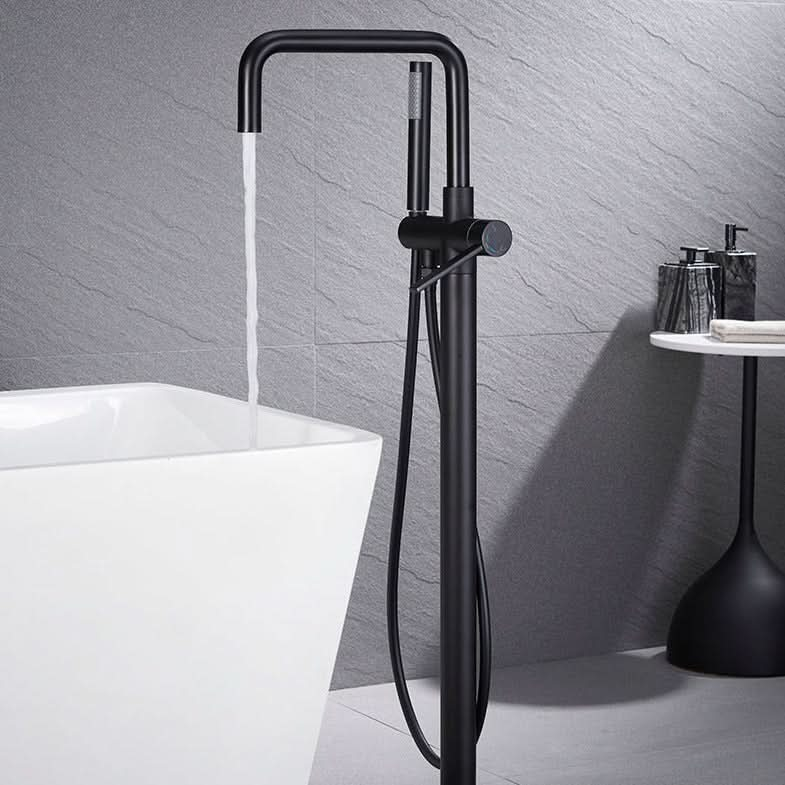
Conclusion
Water leakage may sound like a minor matter, but in the long run, it wastes water bills, time and quality of life. Ninety percent of bathtub leaks can be easily solved by replacing bathtub faucet valve parts in time.
The details of a high-quality life are hidden in this imperceptible stream of water. Choosing high-quality valve replacement parts means you no longer have to deal with the dripping sound every day, no longer be anxious about the water pressure fluctuating between hot and cold, and it is also a wise investment you make for the comfort of your family.
Start checking the condition of your valve right now and solve potential problems before they escalate. Check out the product recommendations below and choose reliable bathtub faucet valve parts to create a truly quiet, efficient bathroom.
FAQ
Q: If you don't know the brand and model of the faucet, how to choose valve parts?
A: You can remove the old parts to measure key dimensions (height, diameter, interface width), or take photos and contact customer service for identification. Most merchants support remote judgment.
Q: How often do bathtub faucet valve parts need to be replaced?
A: For ordinary household usage frequency, it is recommended to have a check-up every 57 years. In areas with hard water or high water pressure, it is recommended to have an inspection every 35 years.
Q: Can the valve cartridge be replaced alone without replacing other parts?
A: OK. However, it is recommended to check the O-ring and rubber washer simultaneously to ensure the overall sealing effect.
Q: Is it normal to still have a slight dripping of water after installation?
A: Not normal. It might be that the valve seat is not fitted properly or the sealing gasket is not in place. It is recommended to disassemble it for inspection or replace the matching sealing parts.
Q: Is it recommended to use lubricating oil instead of silicone grease?
A: Absolutely not recommended. Lubricating oil may corrode rubber. Food-grade silicone grease should be used to ensure safety and sealing effect.
Related Articles:
5 Signs You Need Bathtub Faucet Replacement Parts and How to Fix Them
How to Replace a Bathtub Faucet Cartridge: Easy Steps and Tips
Complete Guide to Updating Your 3 Handle Bathtub and Shower Faucet
